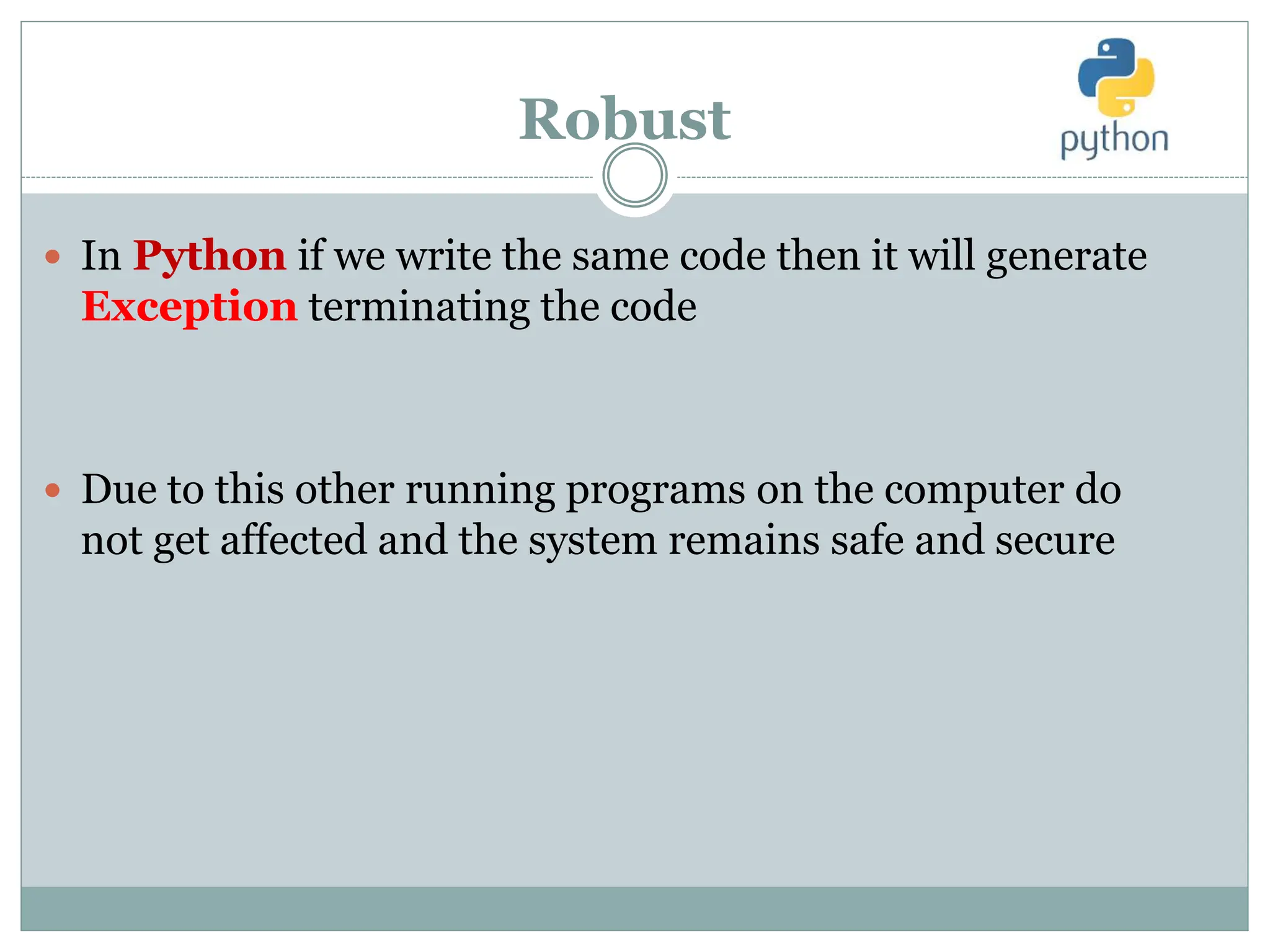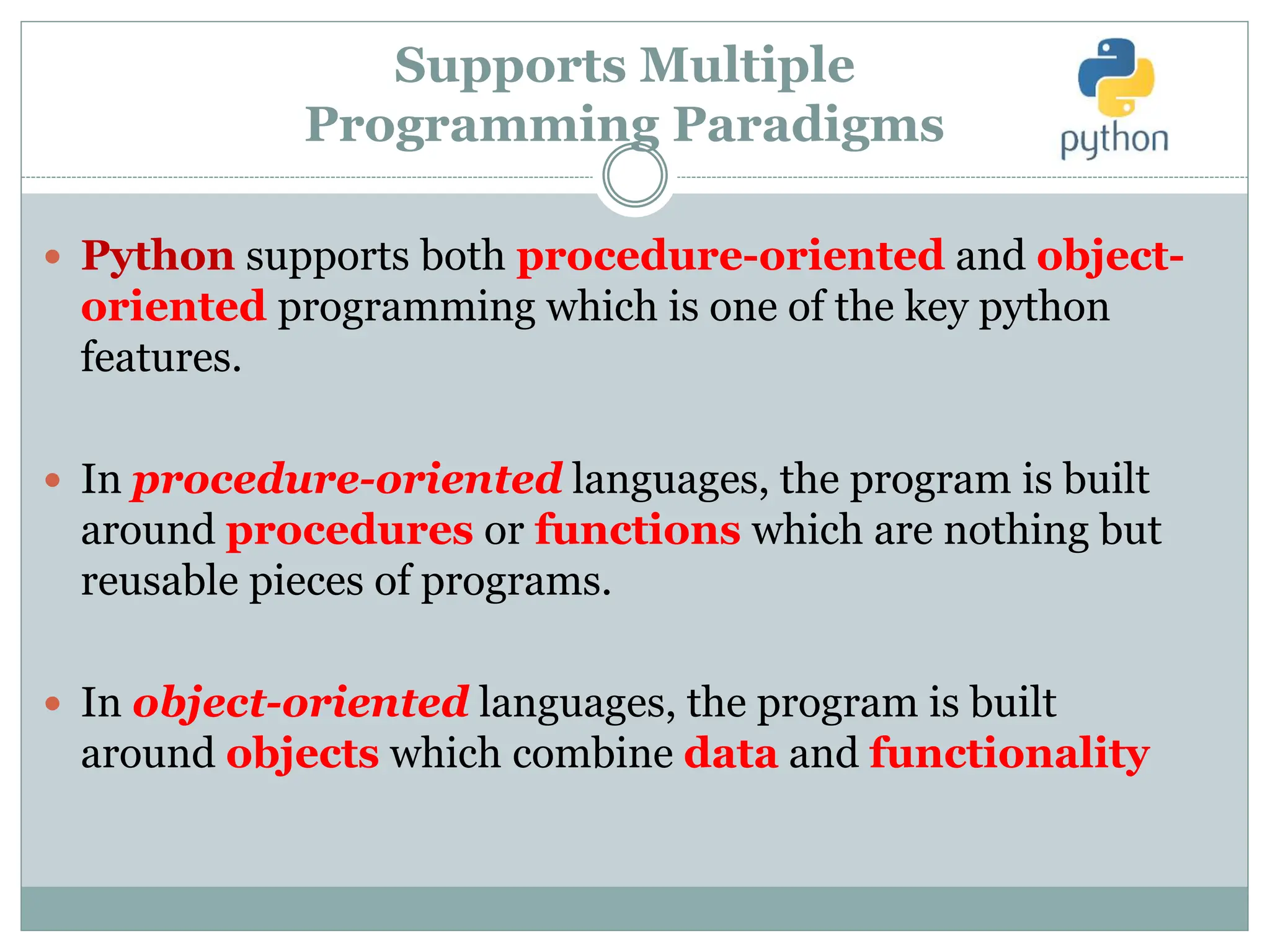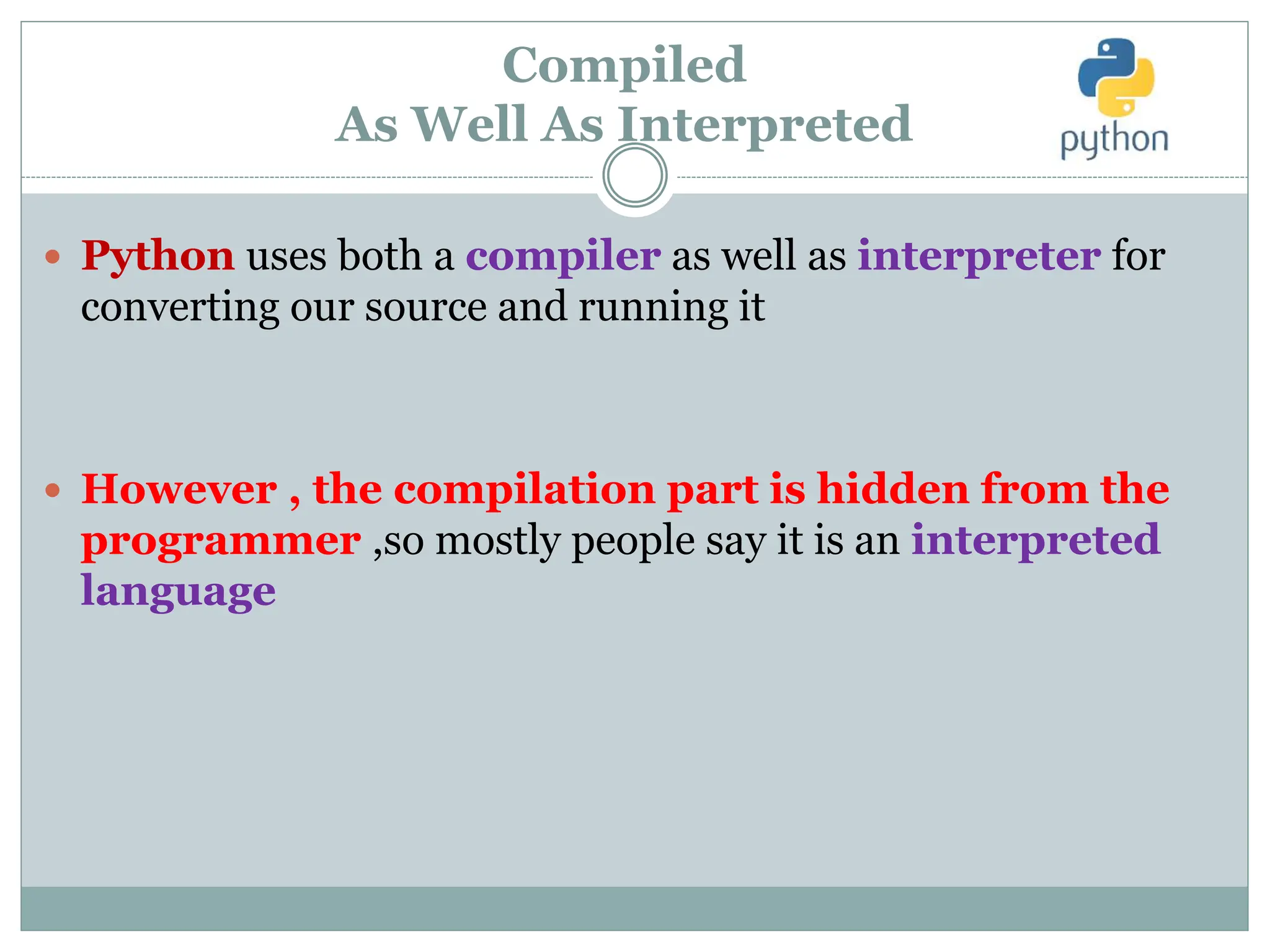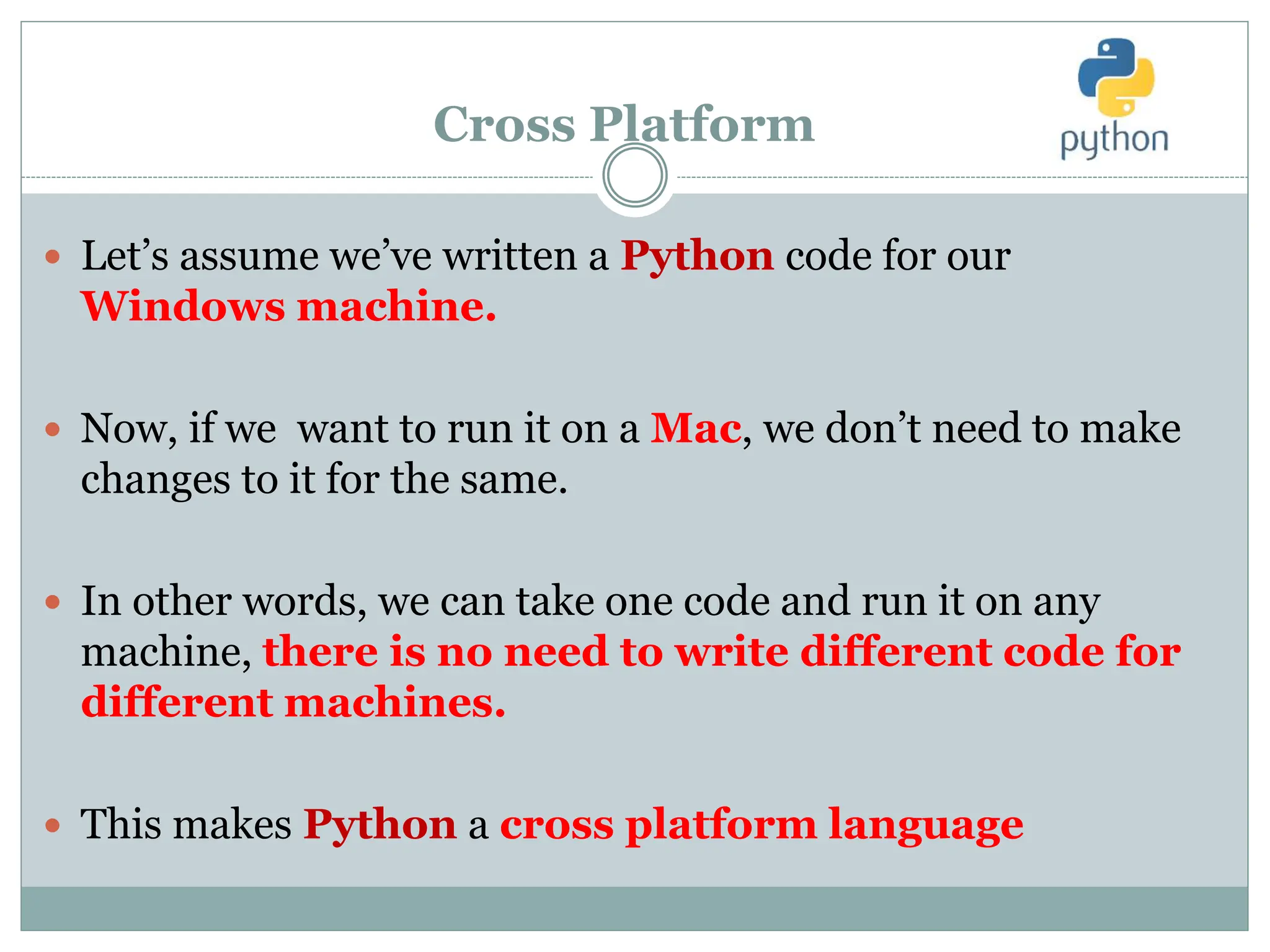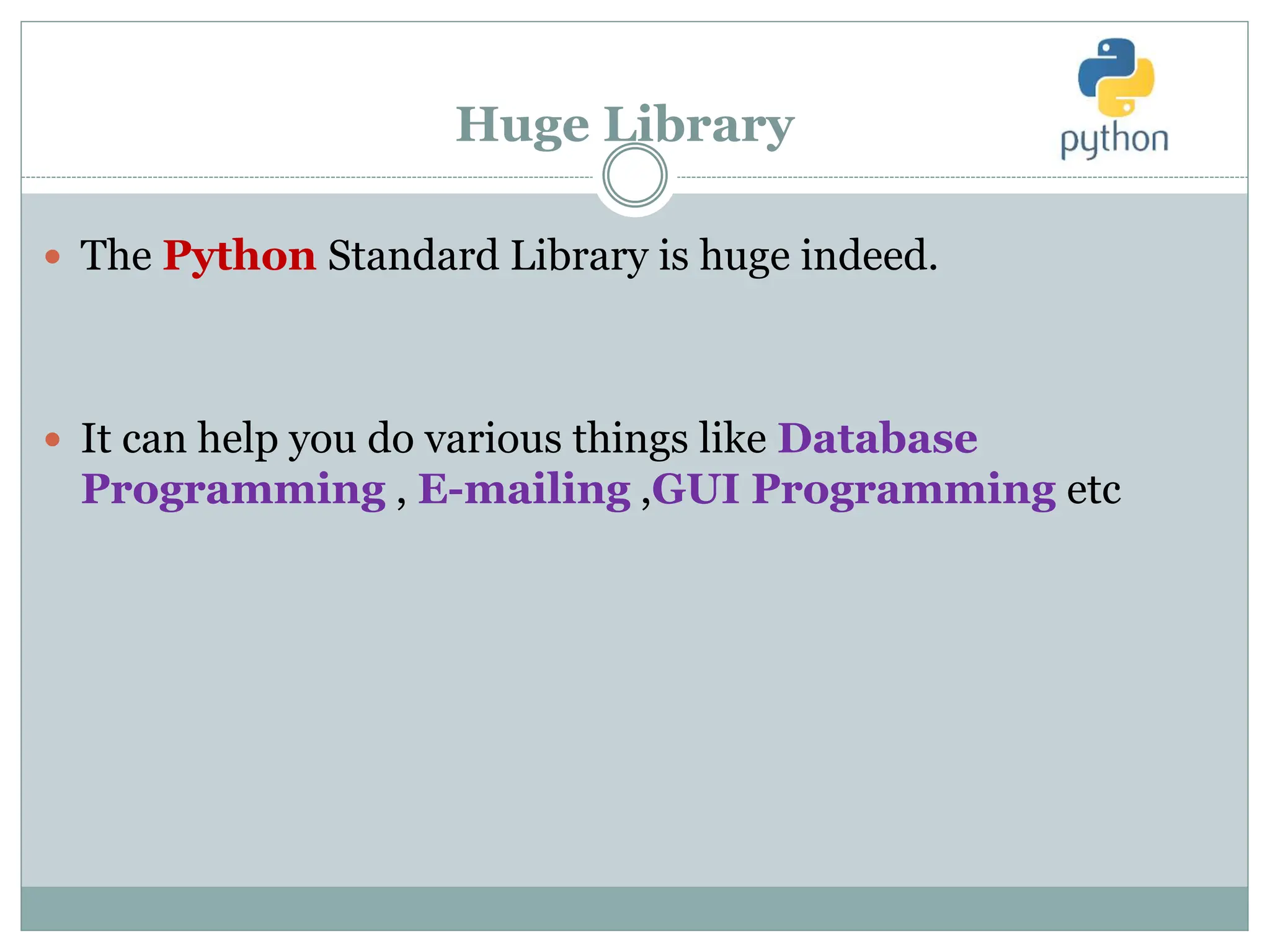The document provides an introduction to Python, detailing its history, features, and applications, including GUI development, web applications, data analysis, and AI/ML. Created by Guido van Rossum, Python is a versatile programming language that is easy to learn and widely used in various fields. It is managed by the Python Software Foundation and is known for its simplicity, dynamic typing, and extensive libraries.
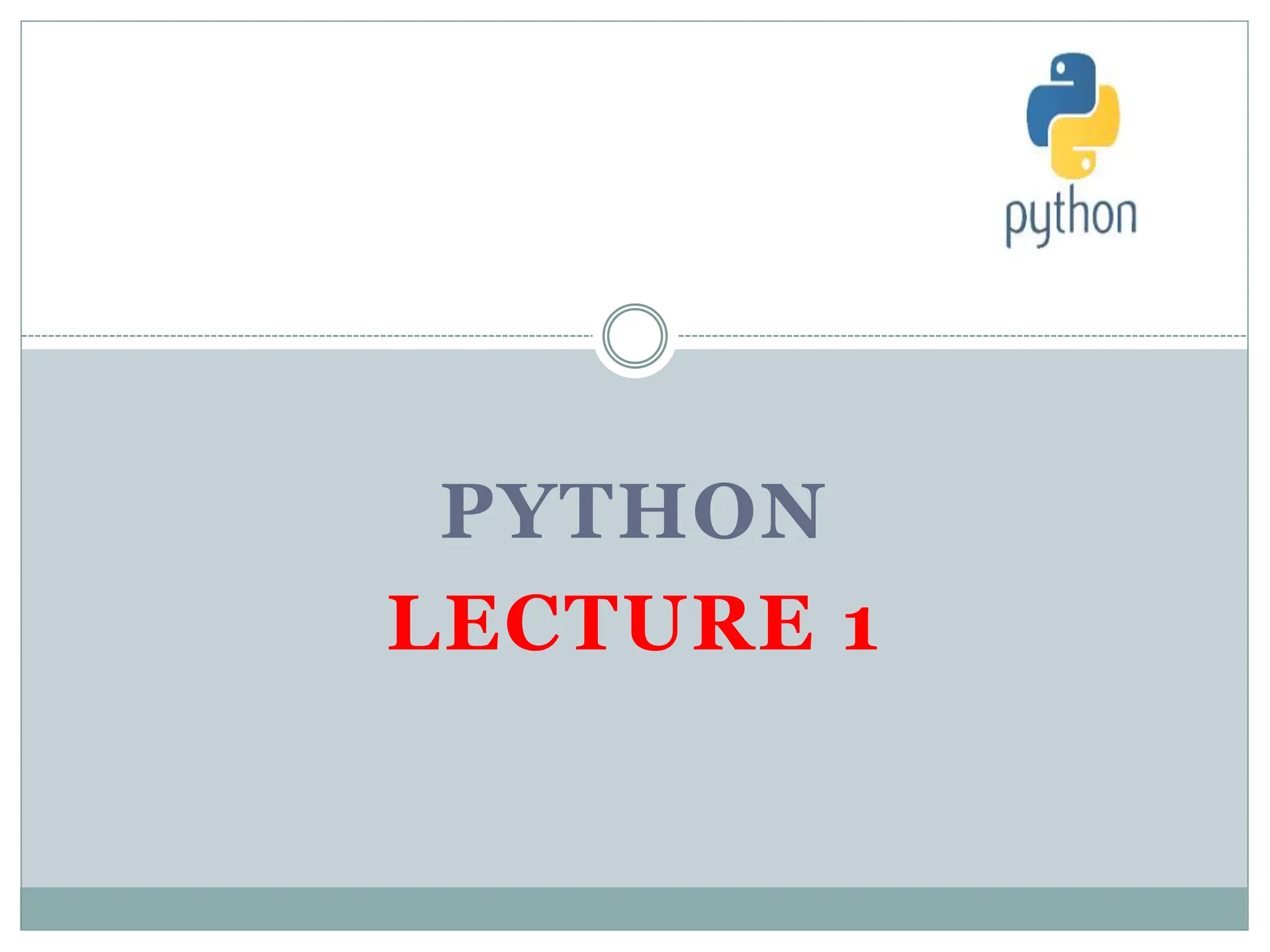
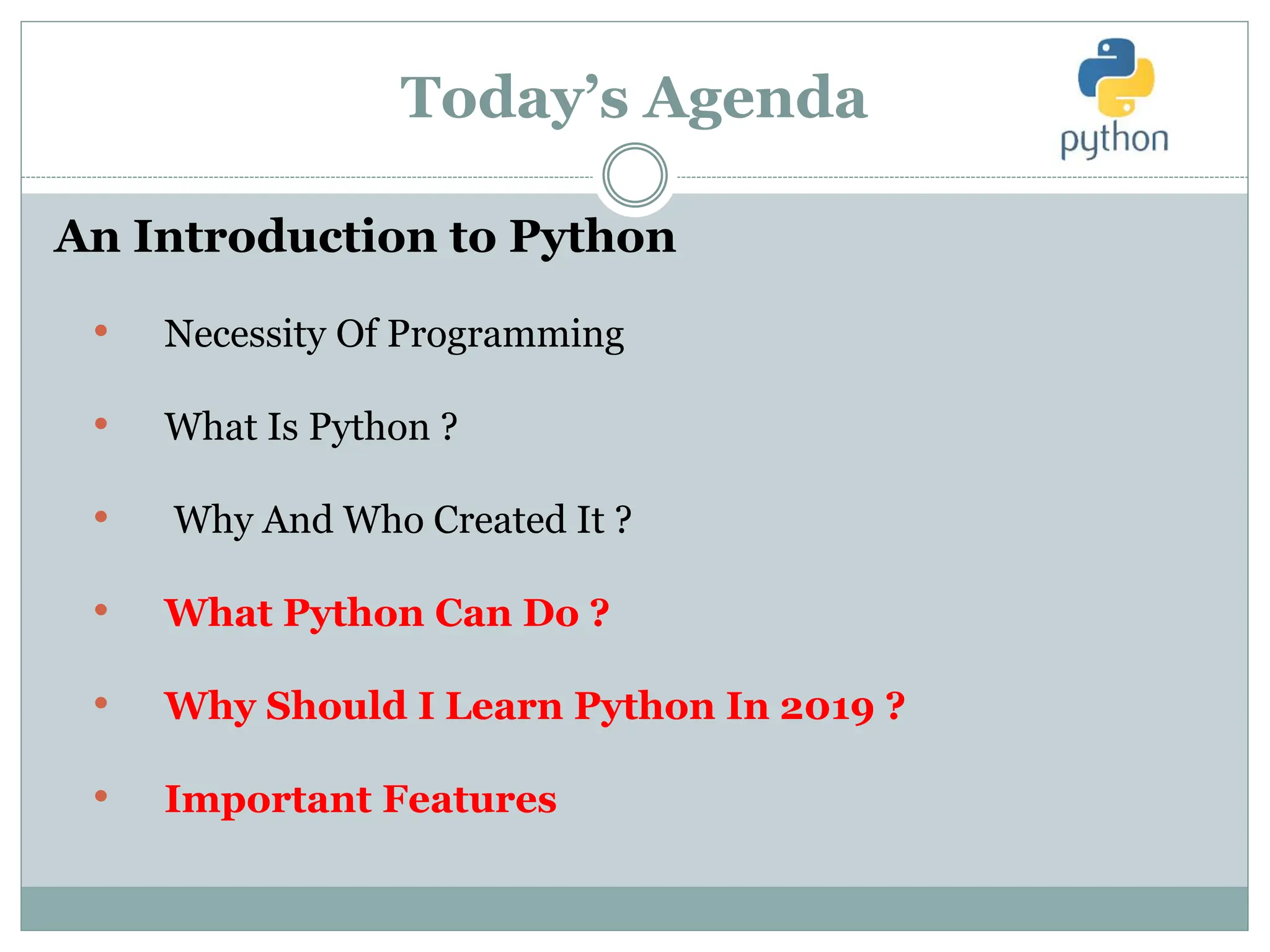
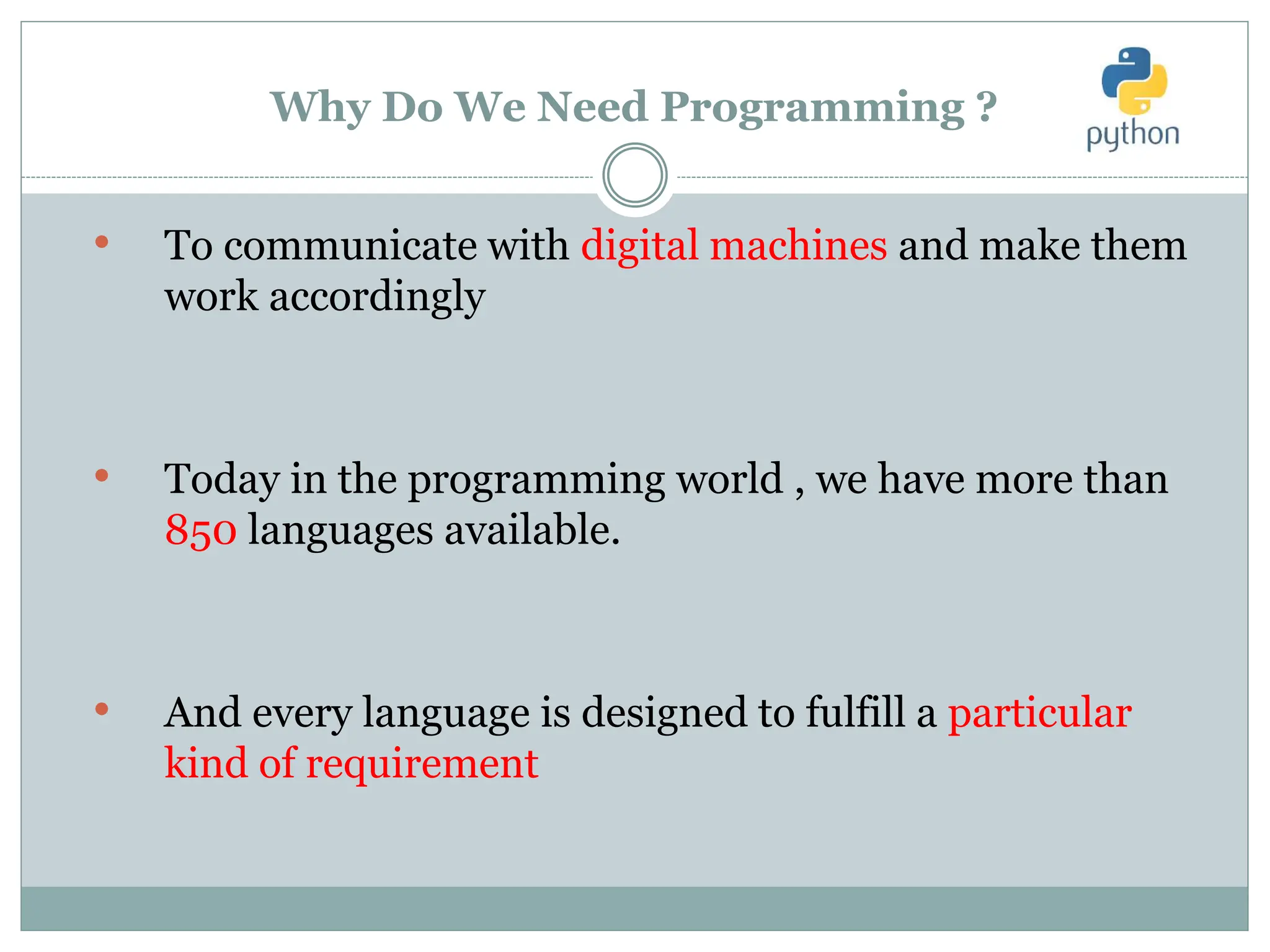
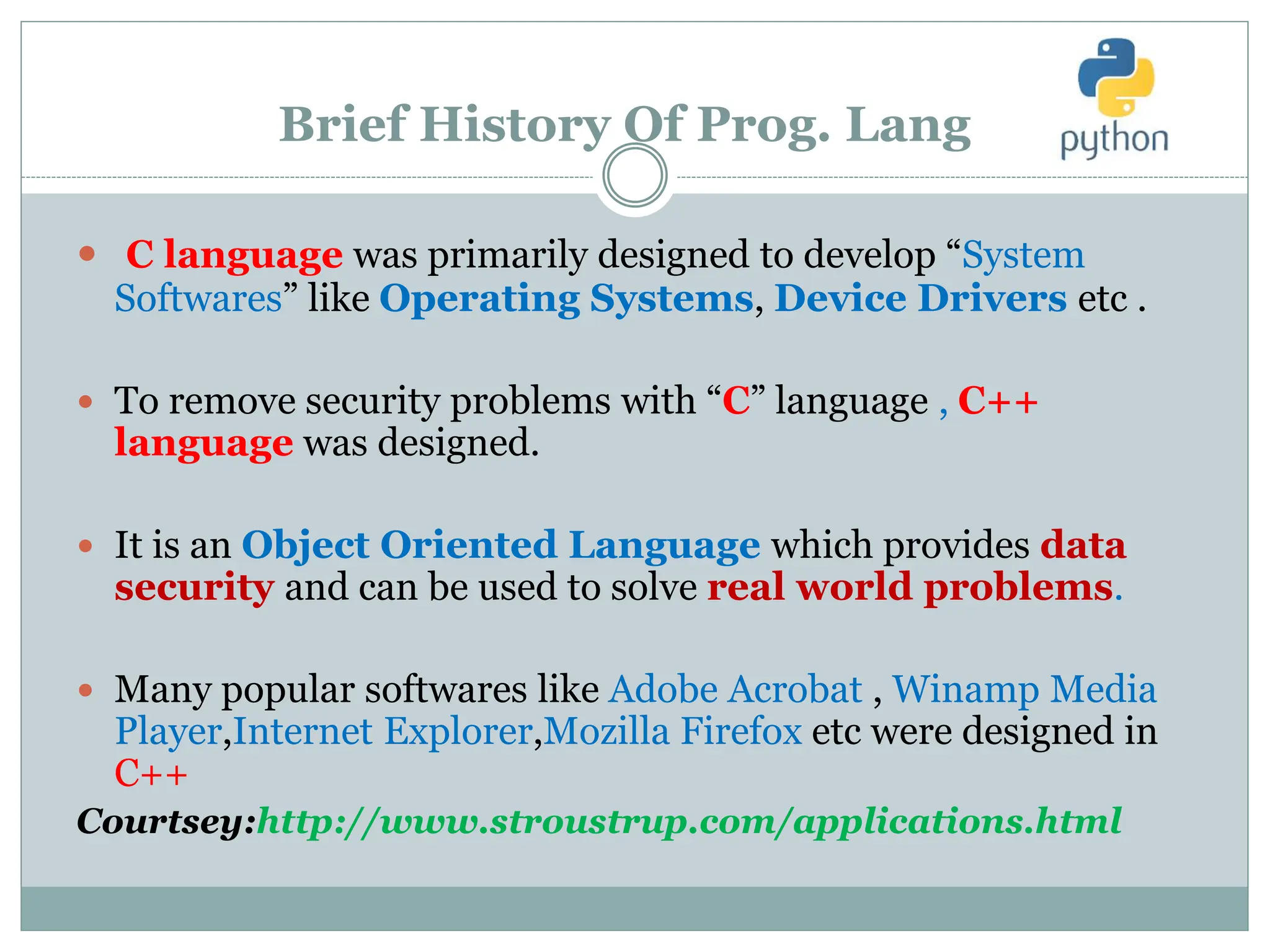
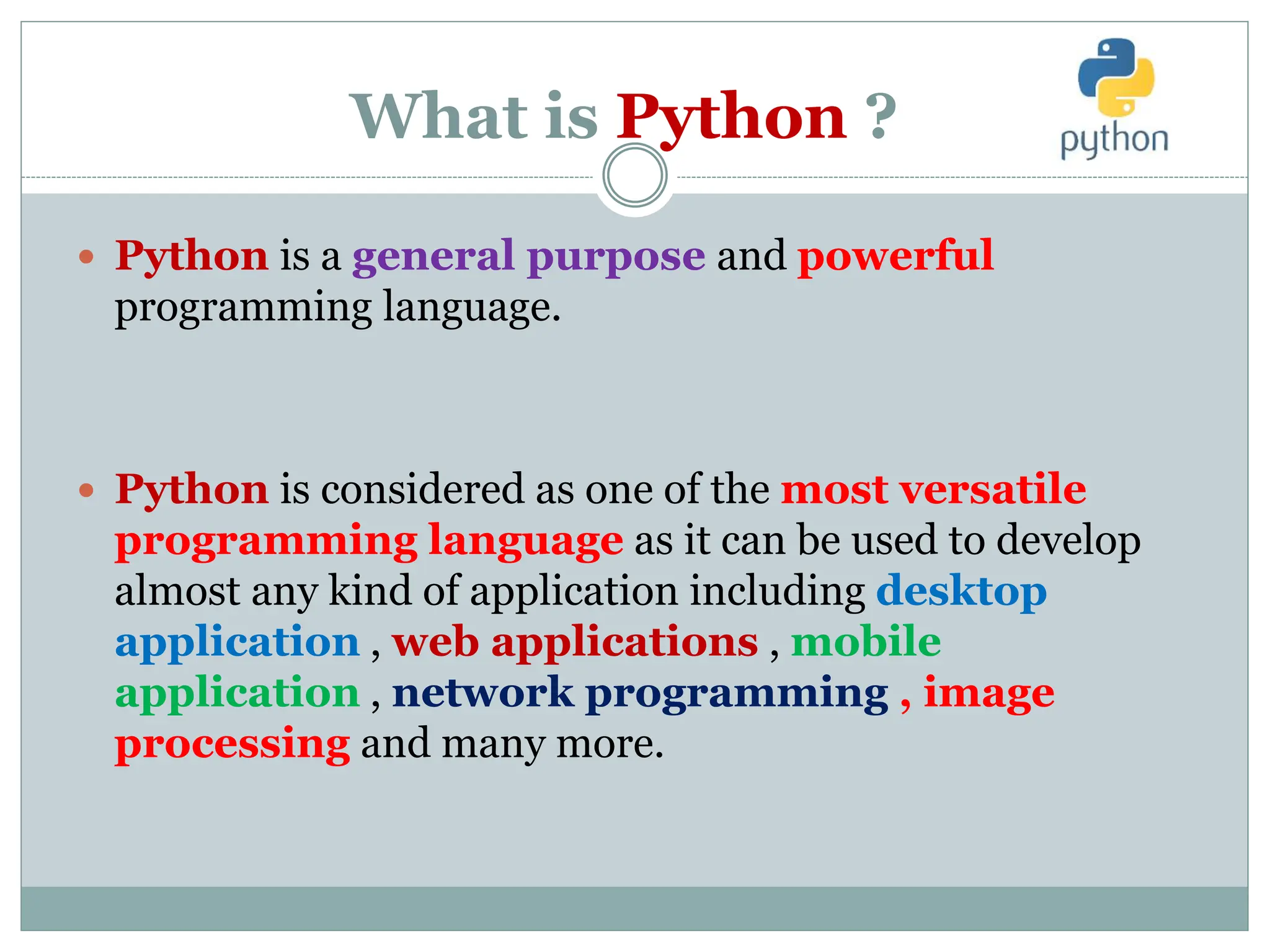
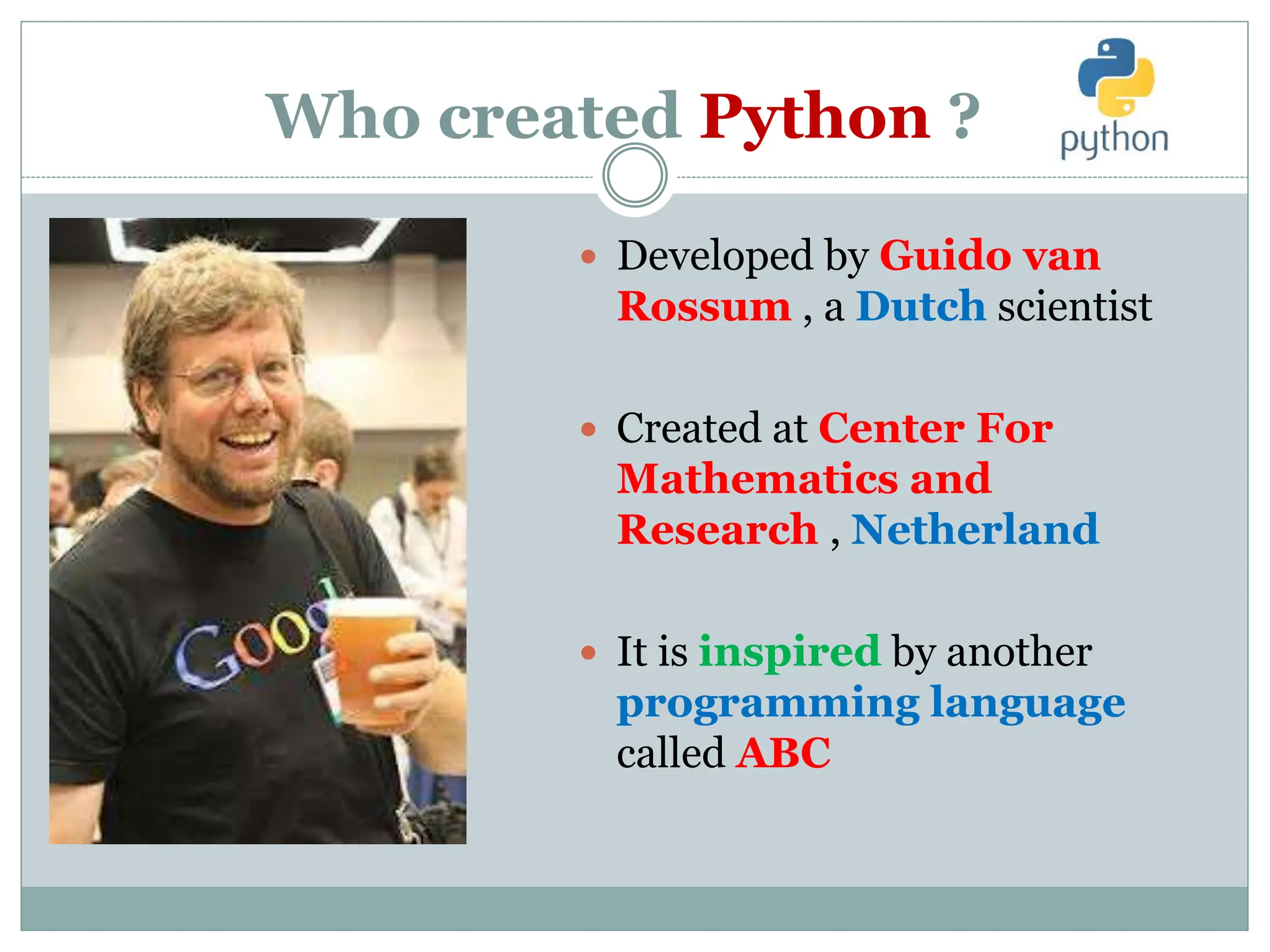
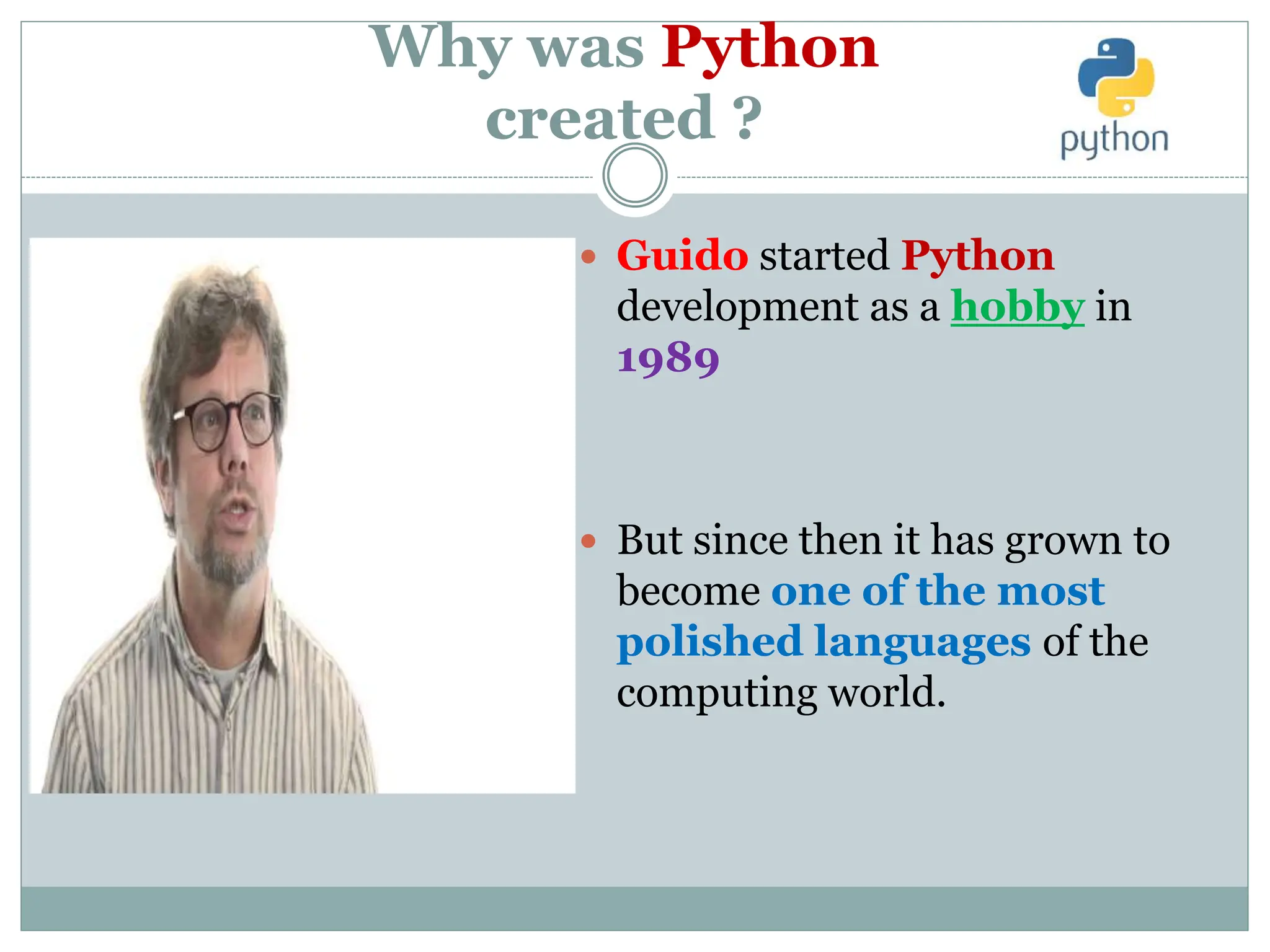
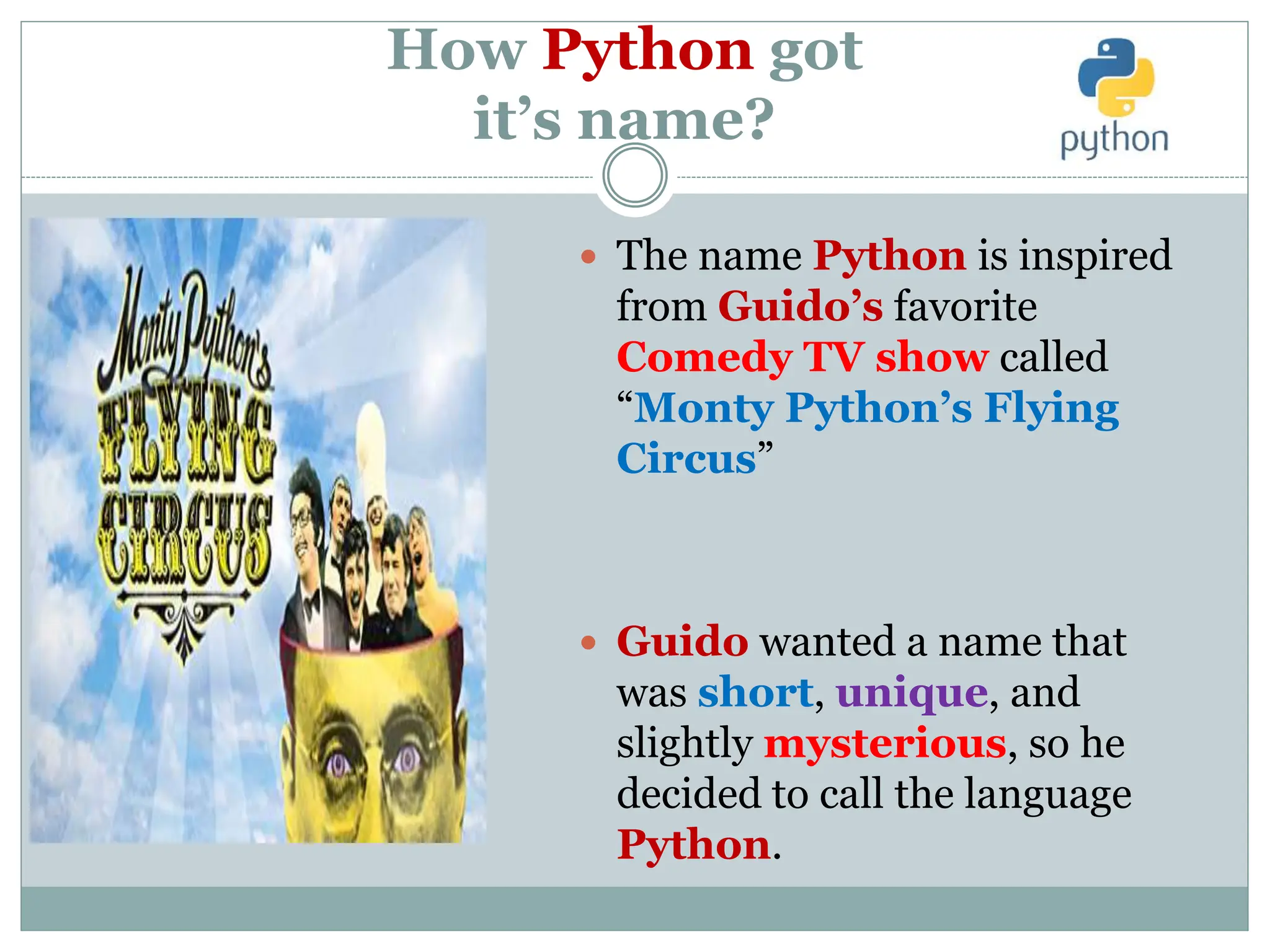
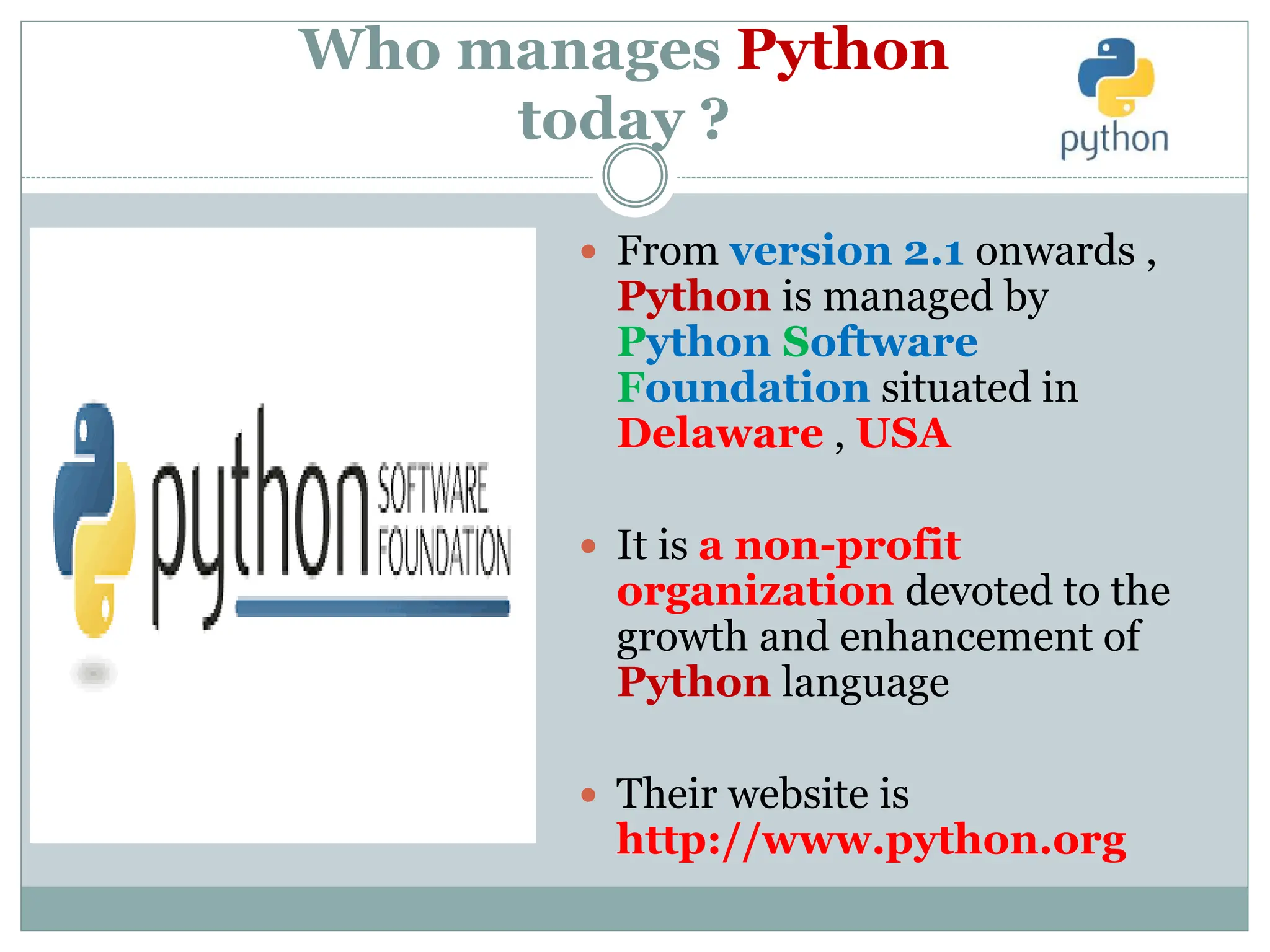
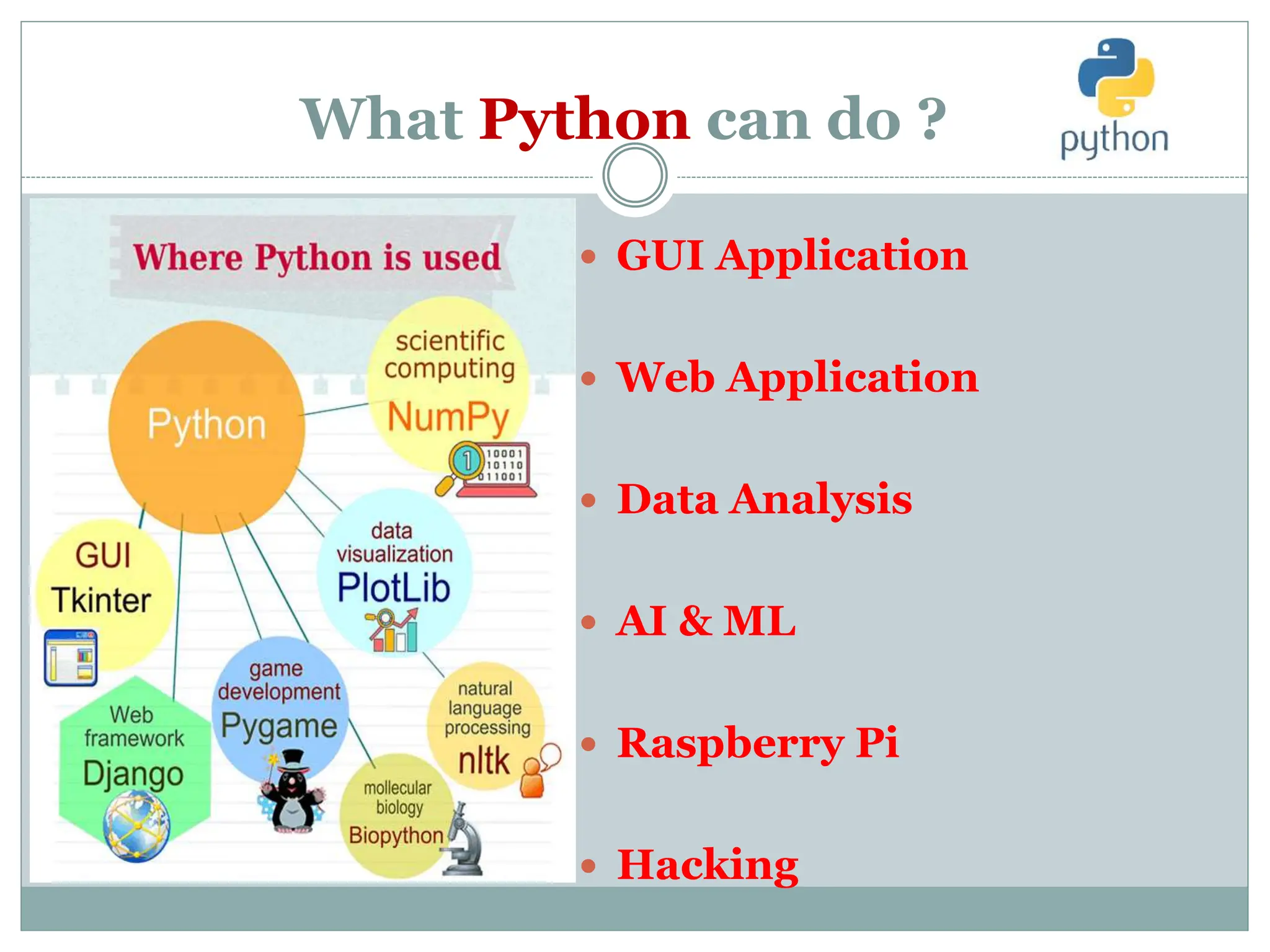
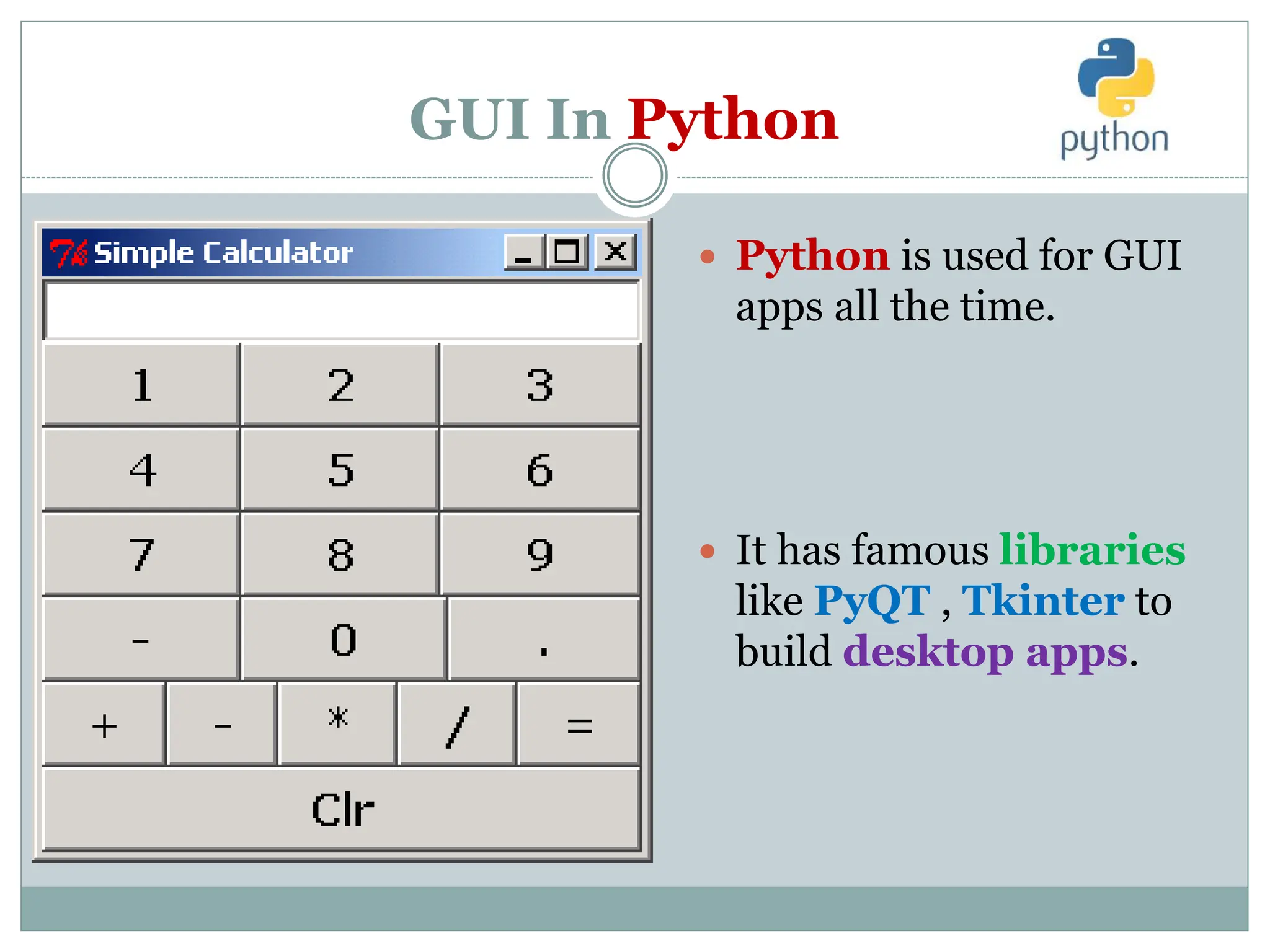
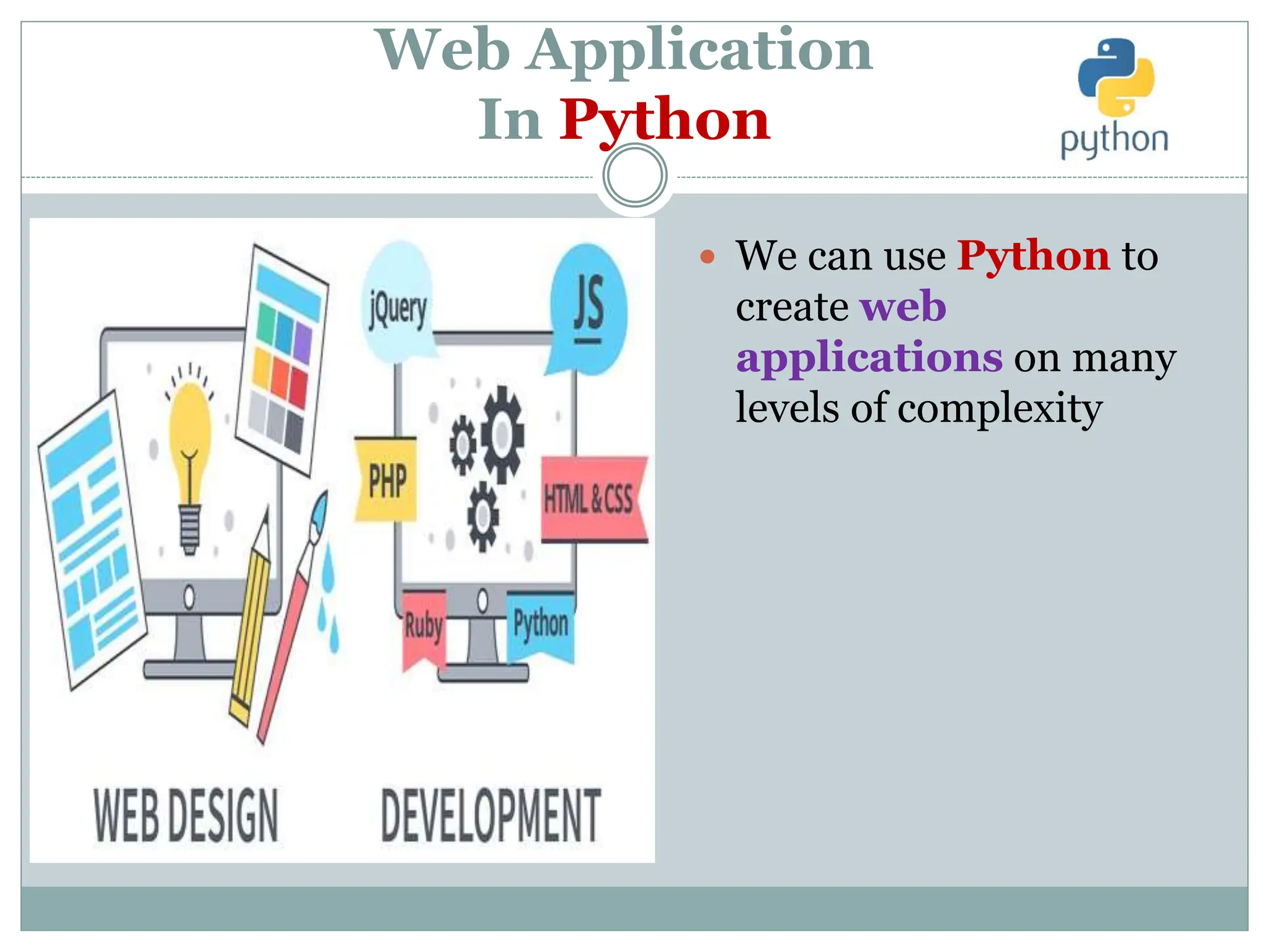
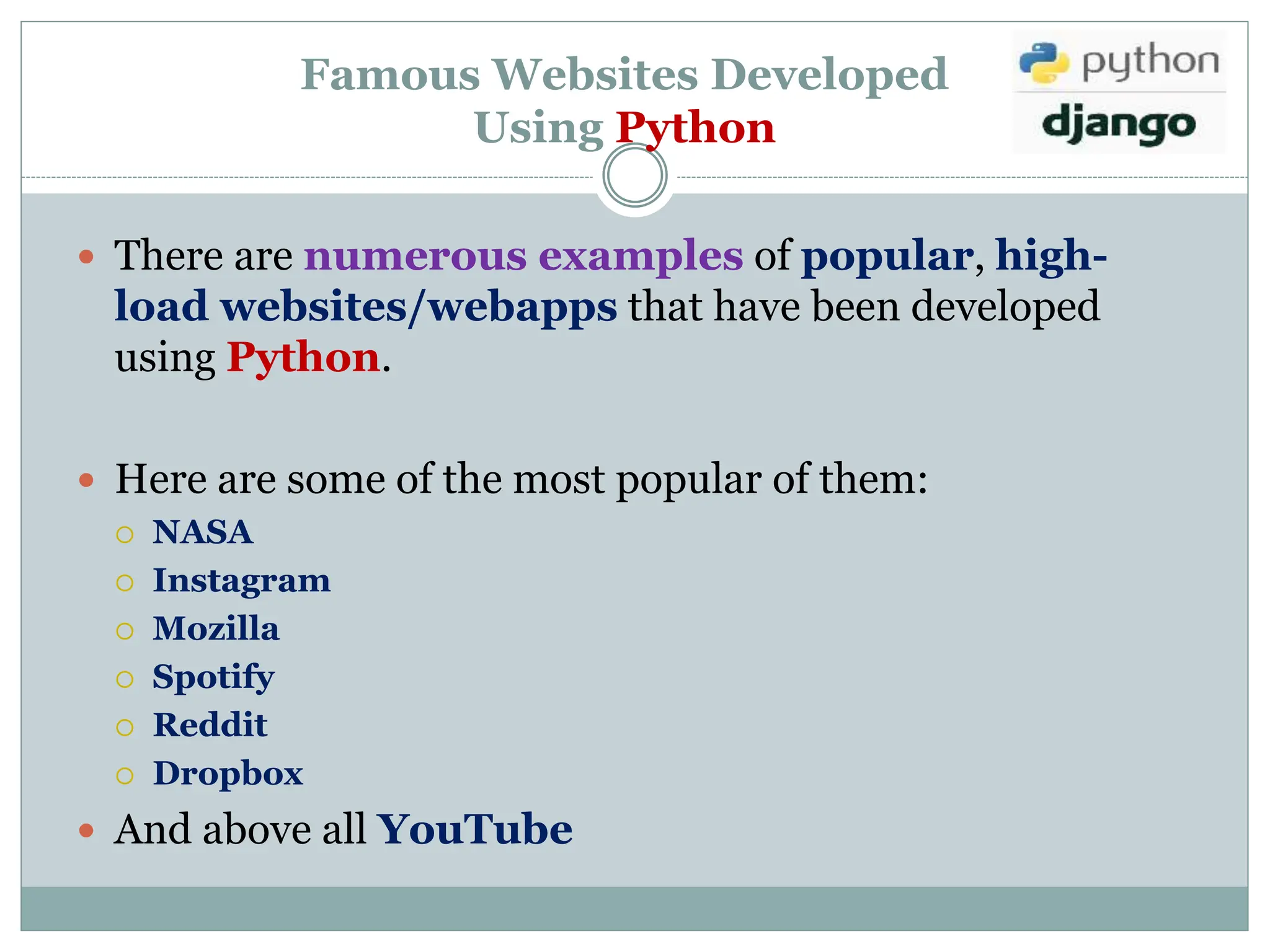
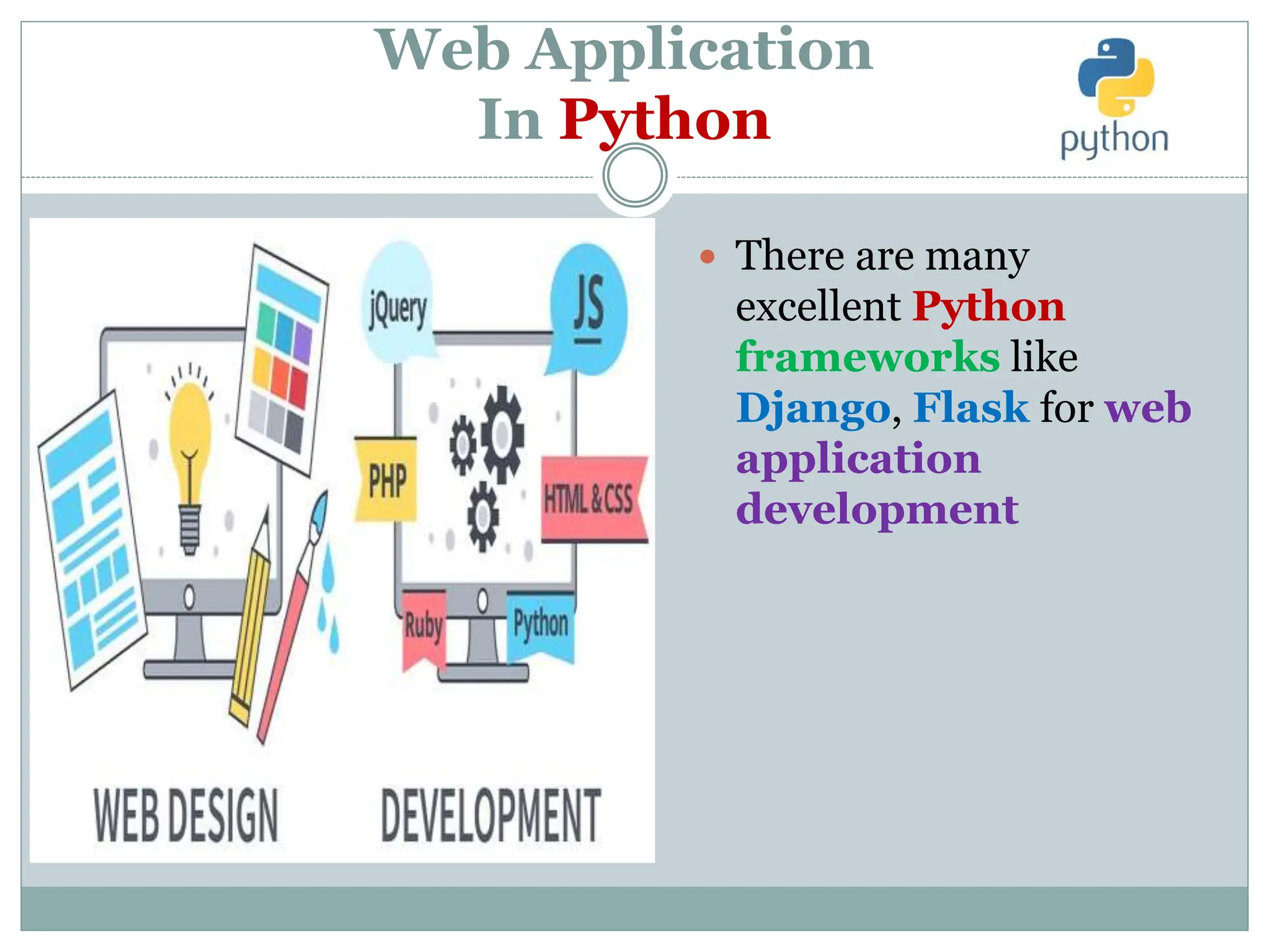
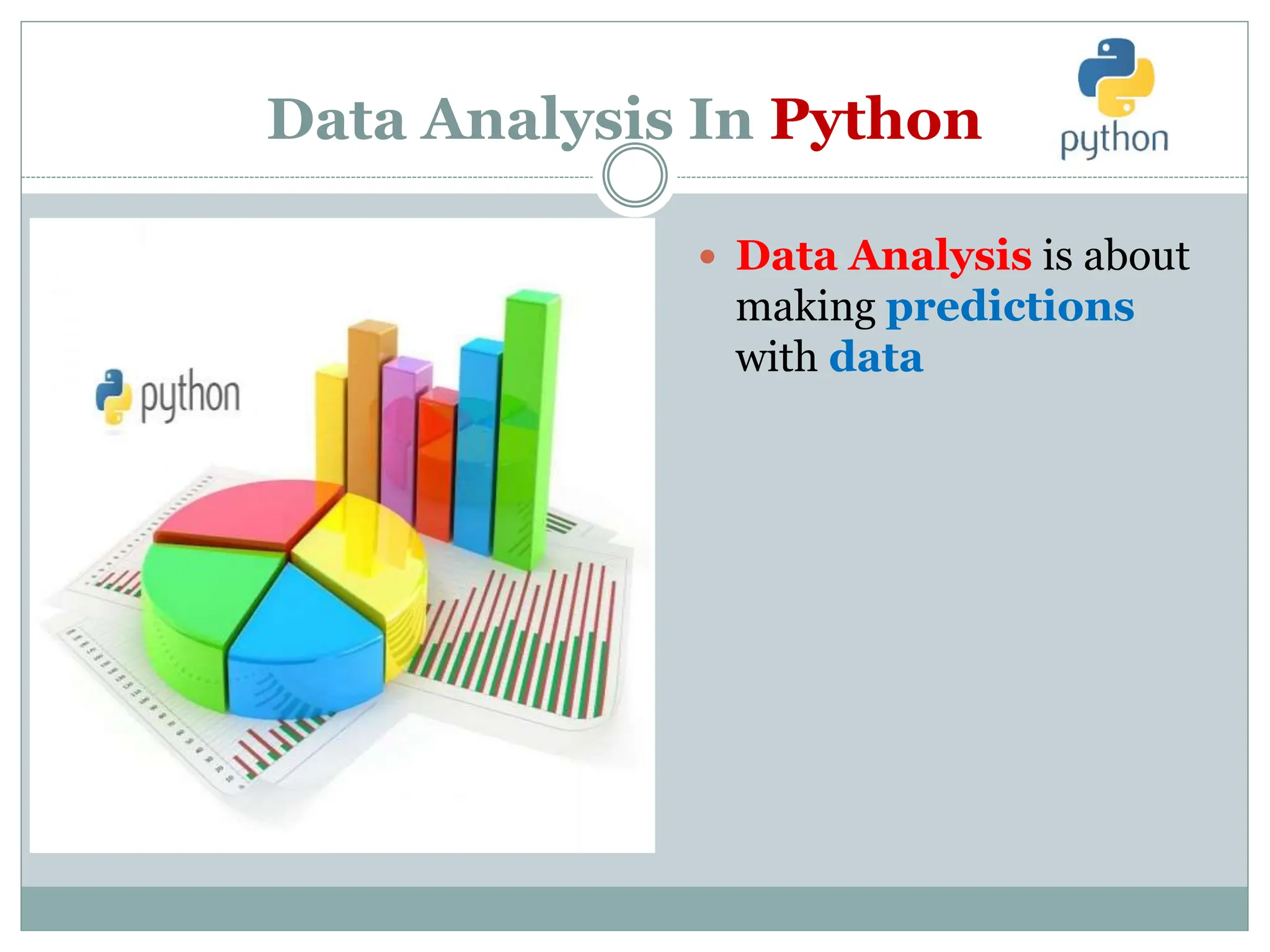
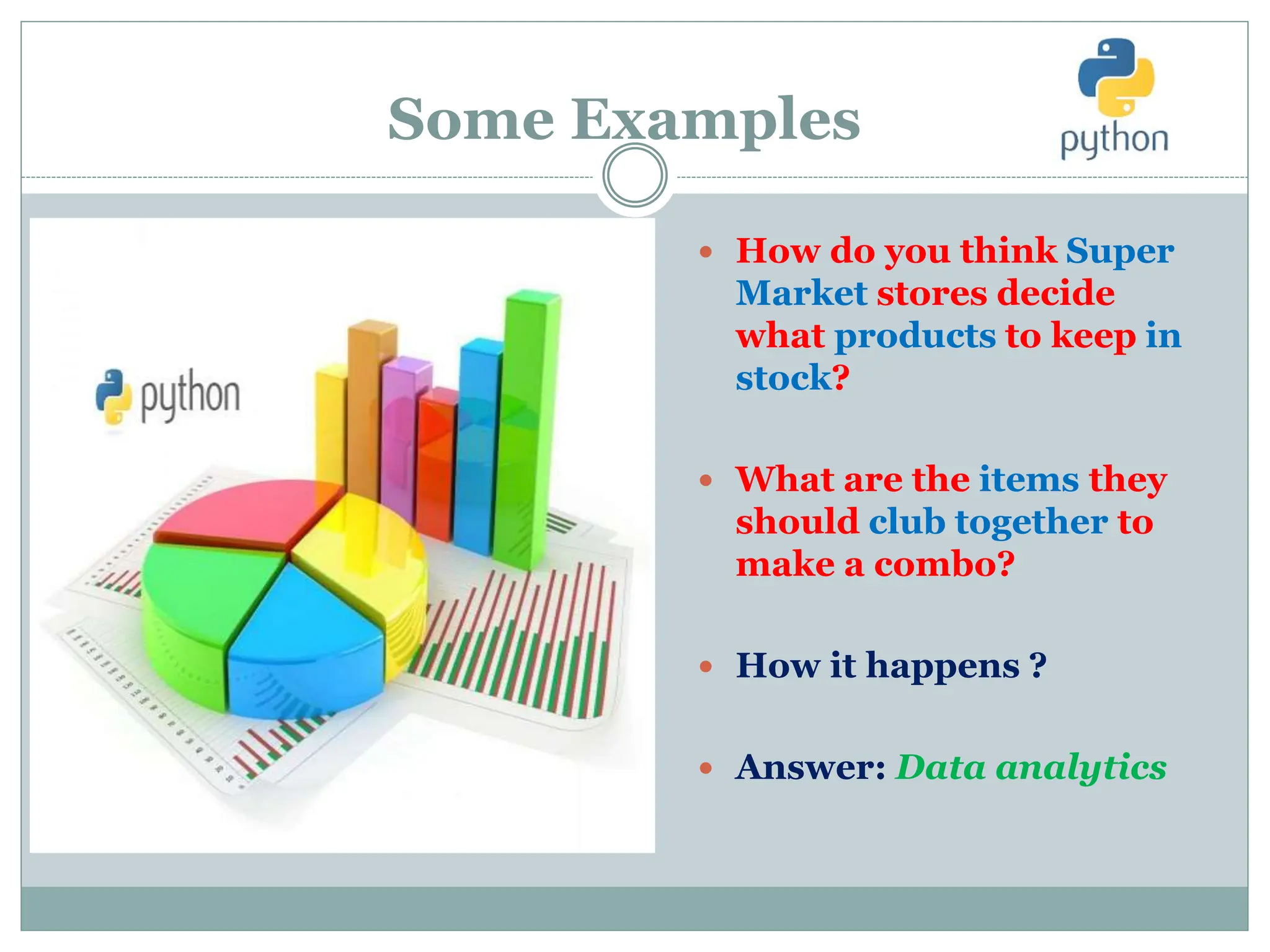
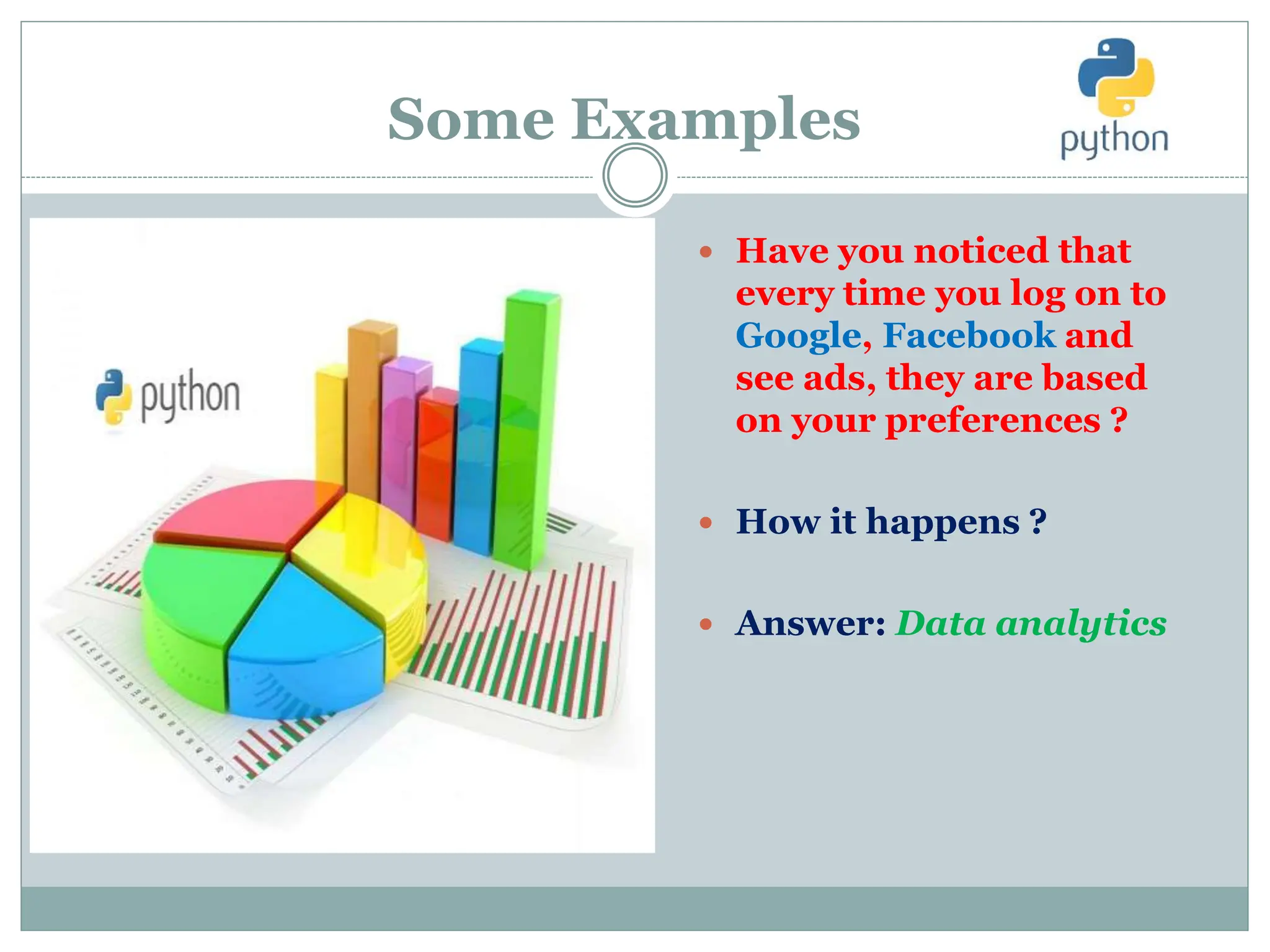
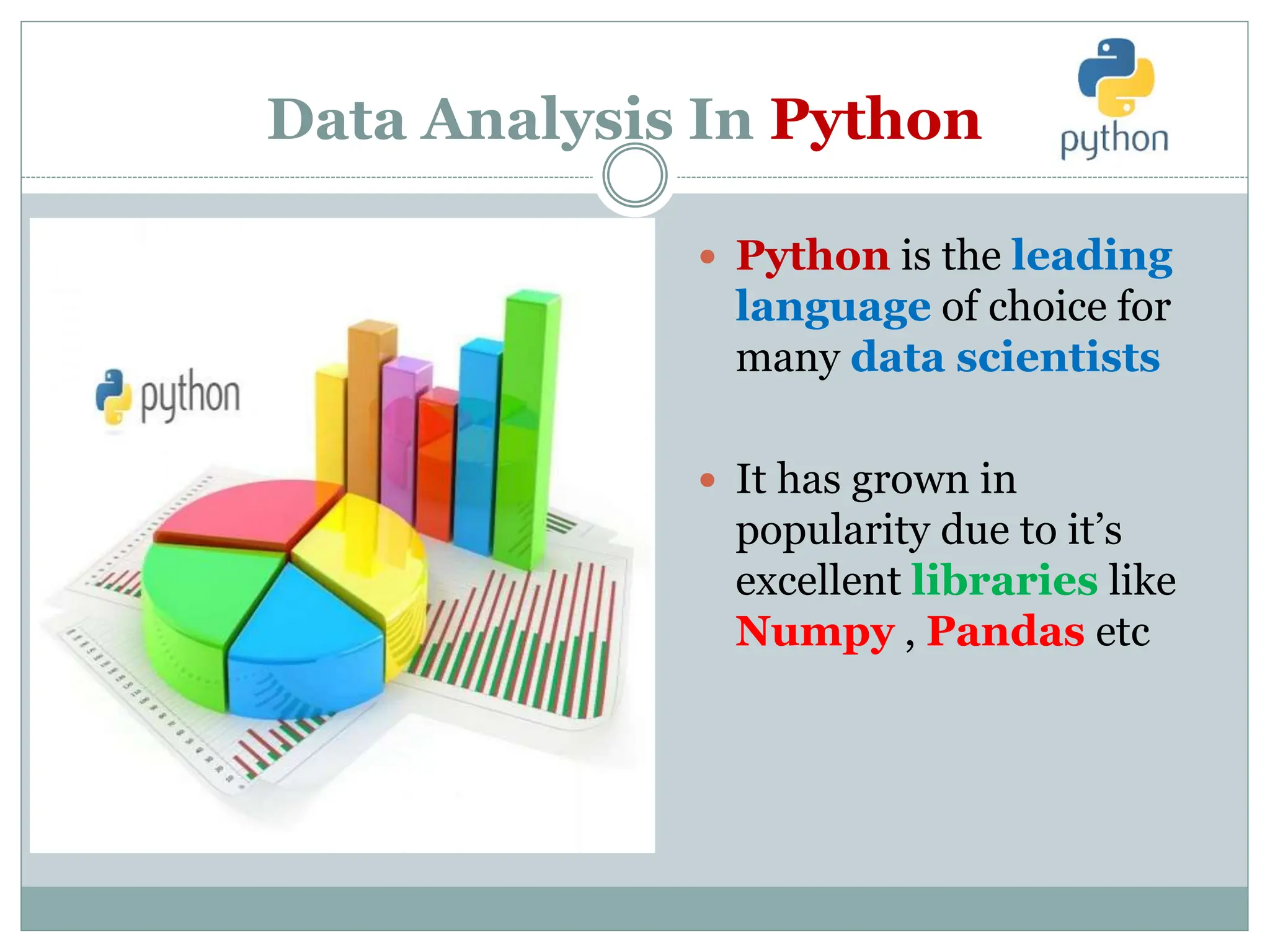

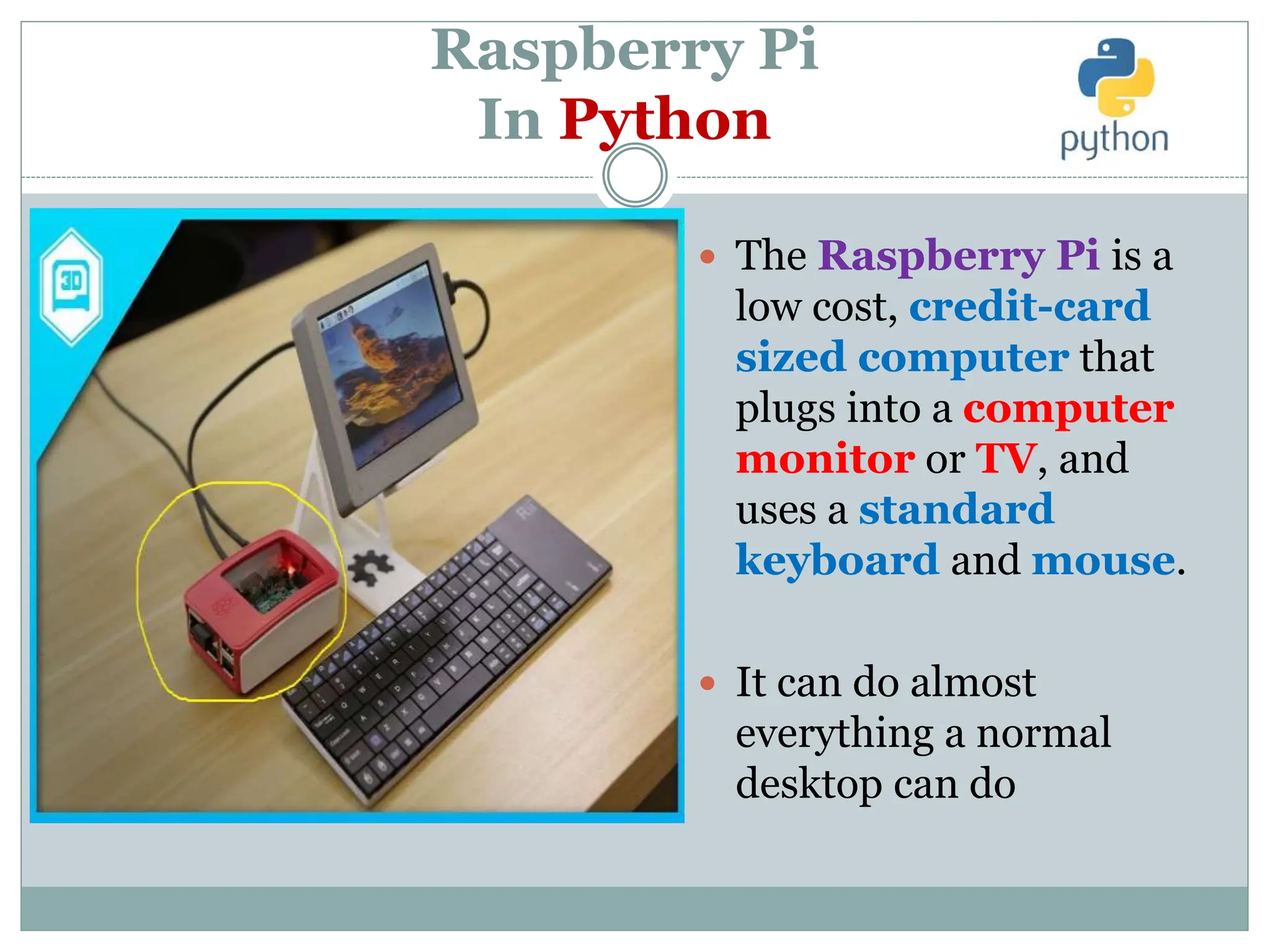

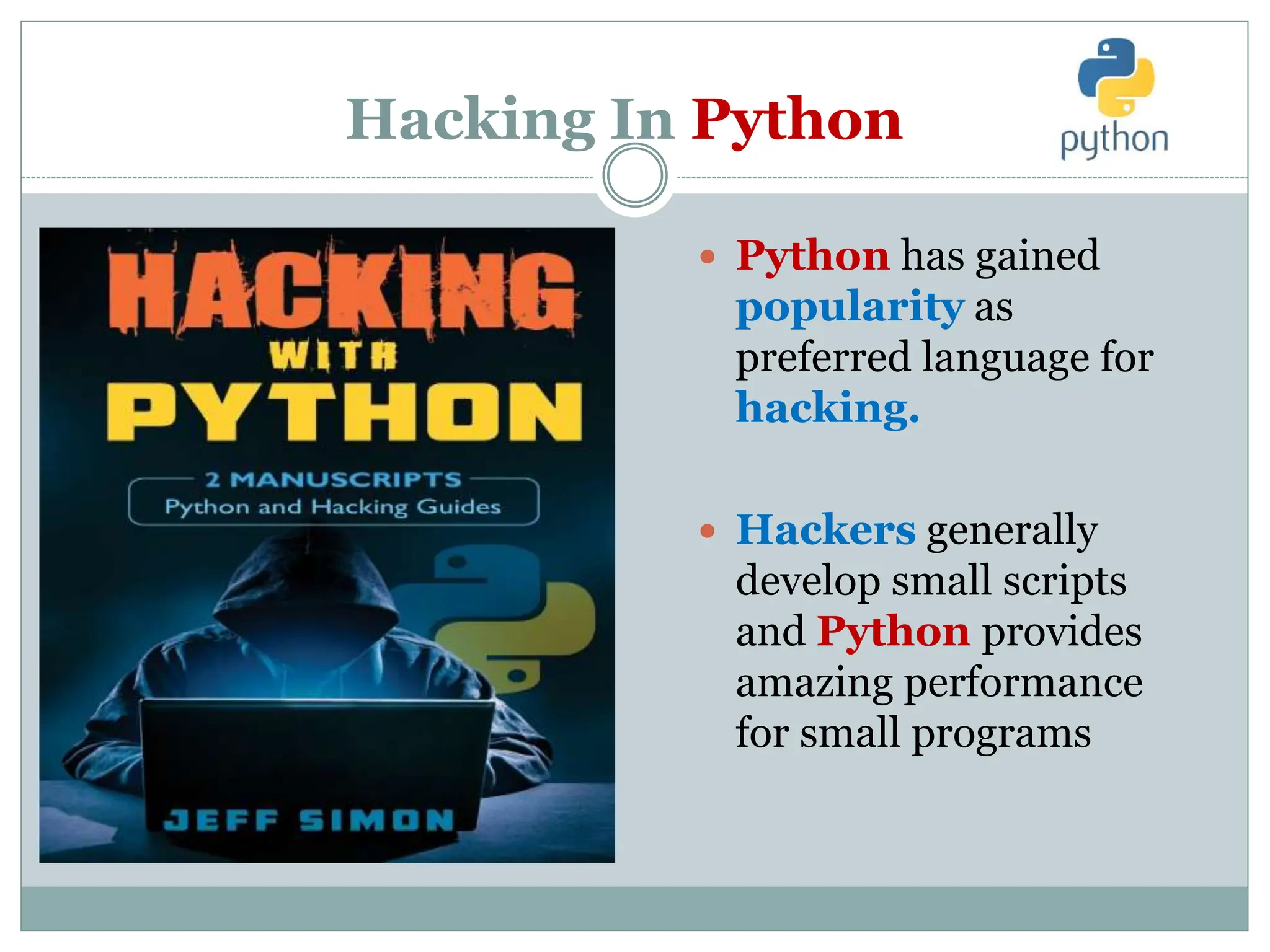
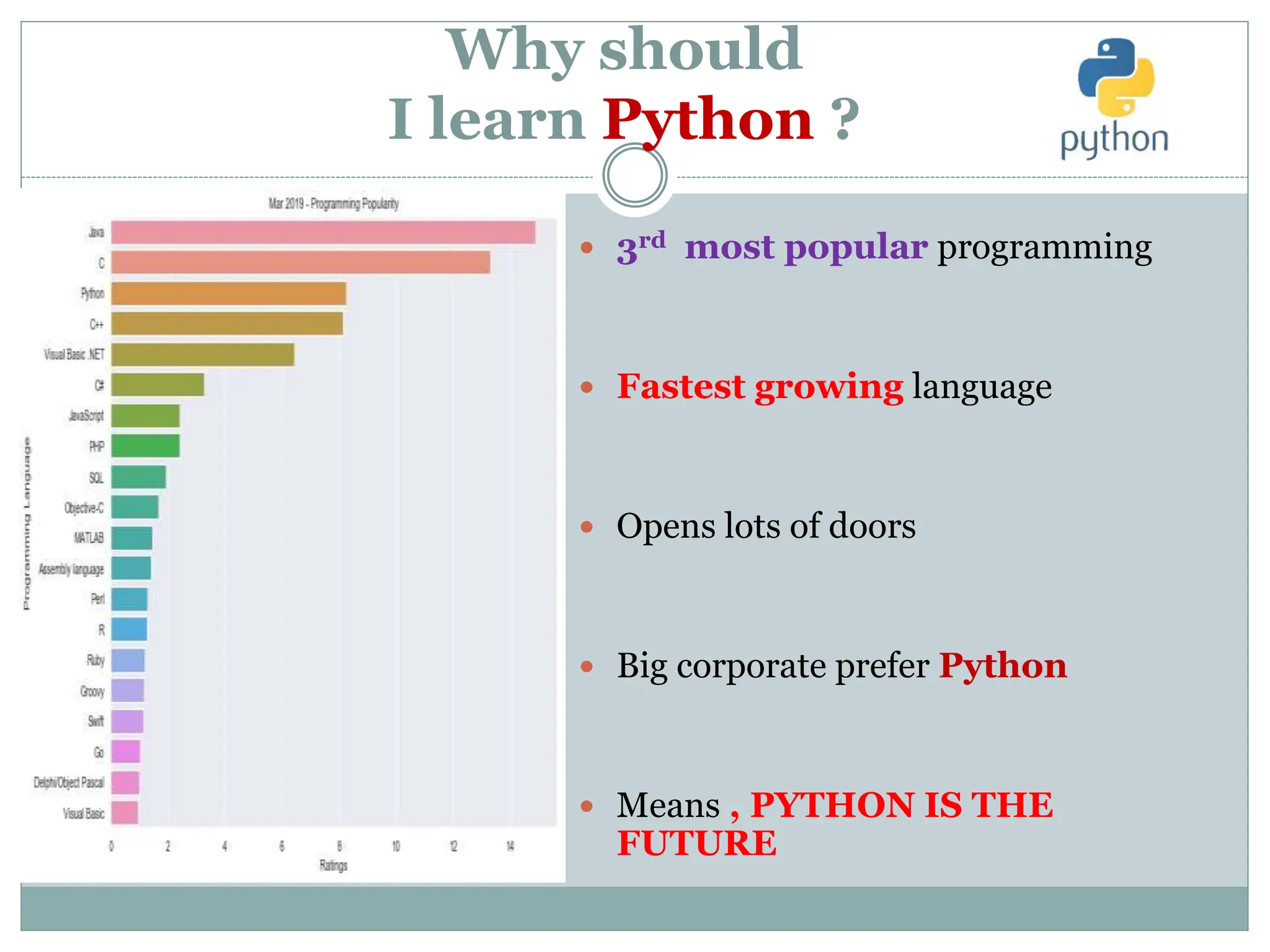
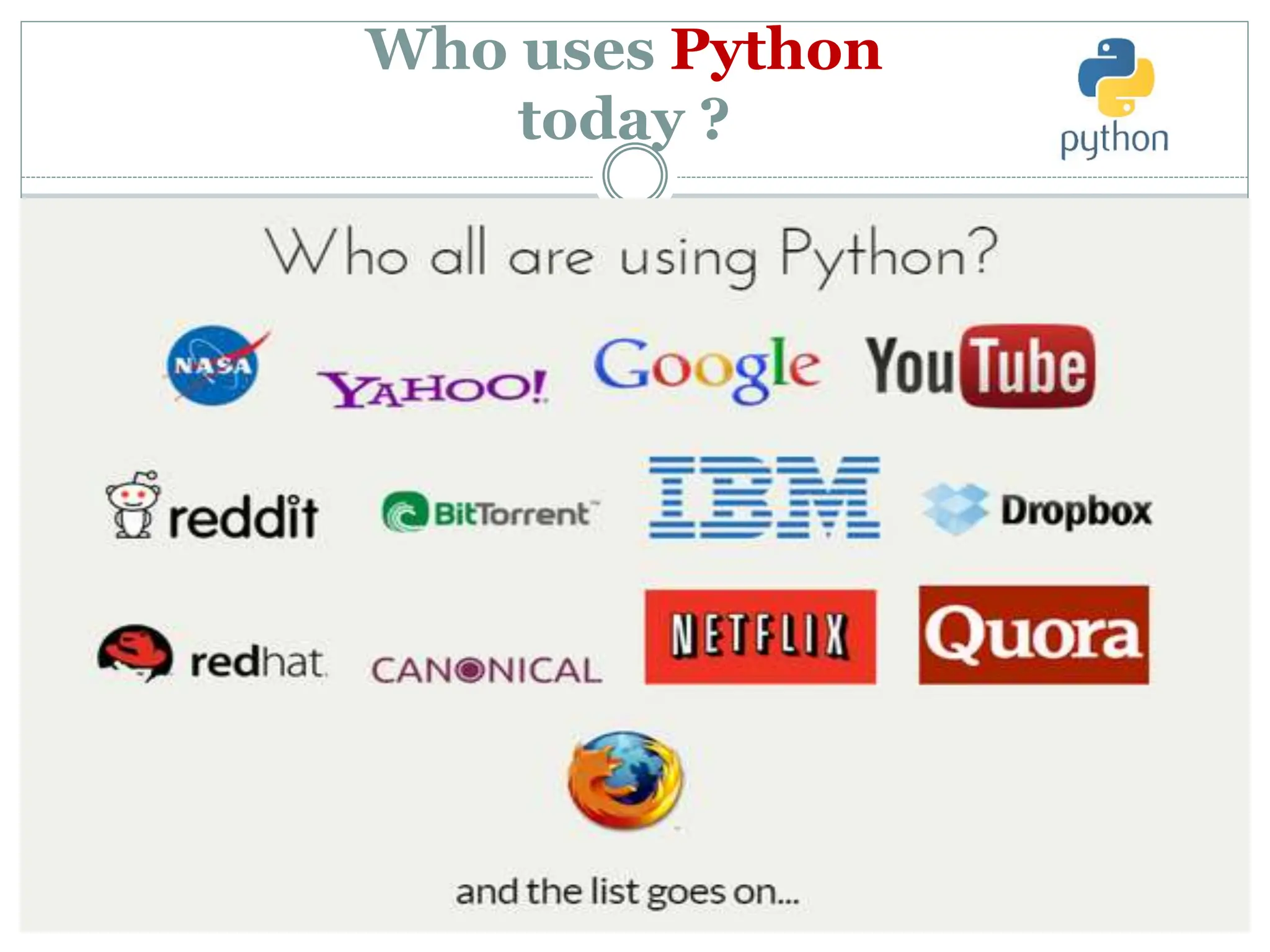
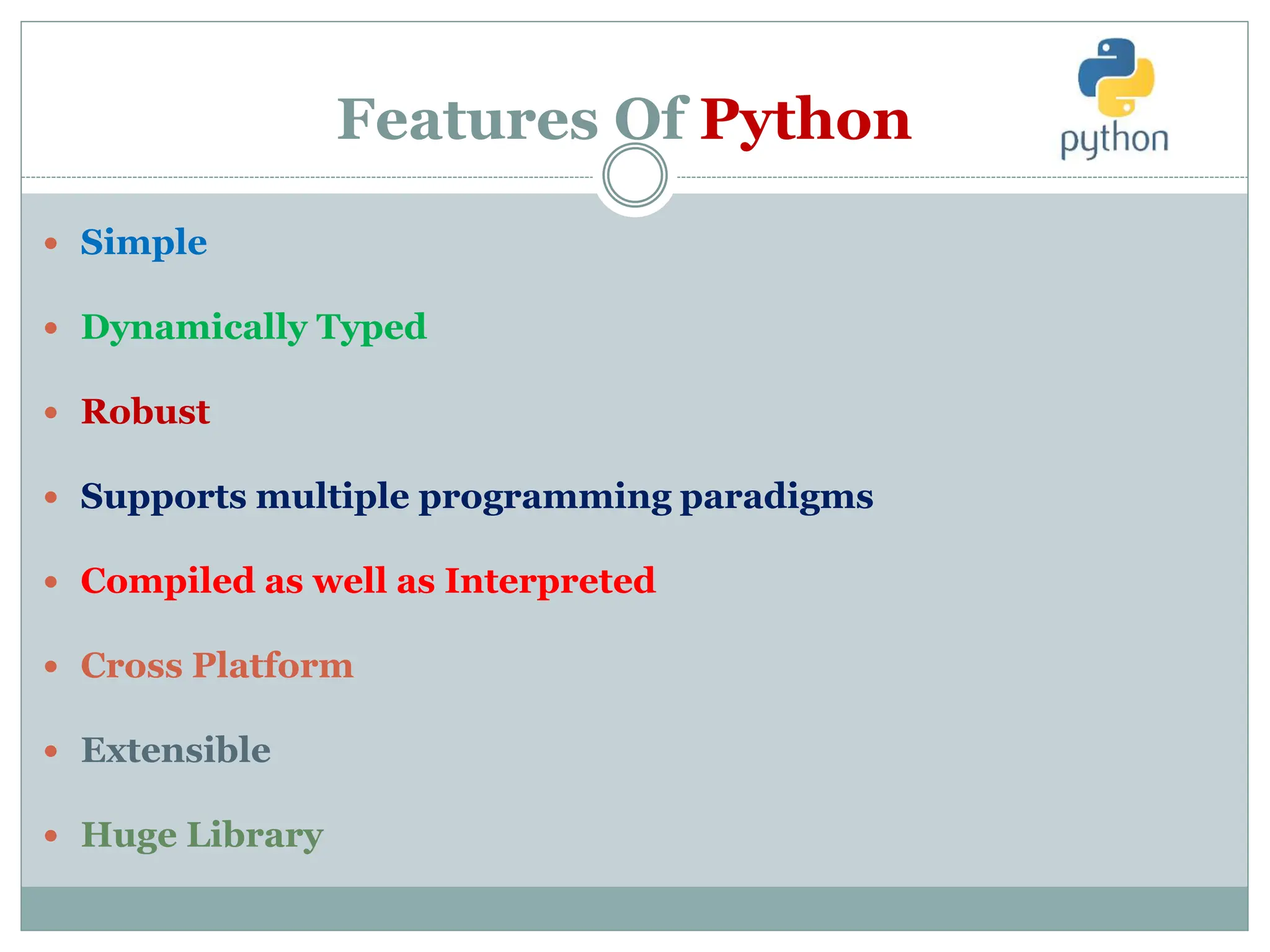
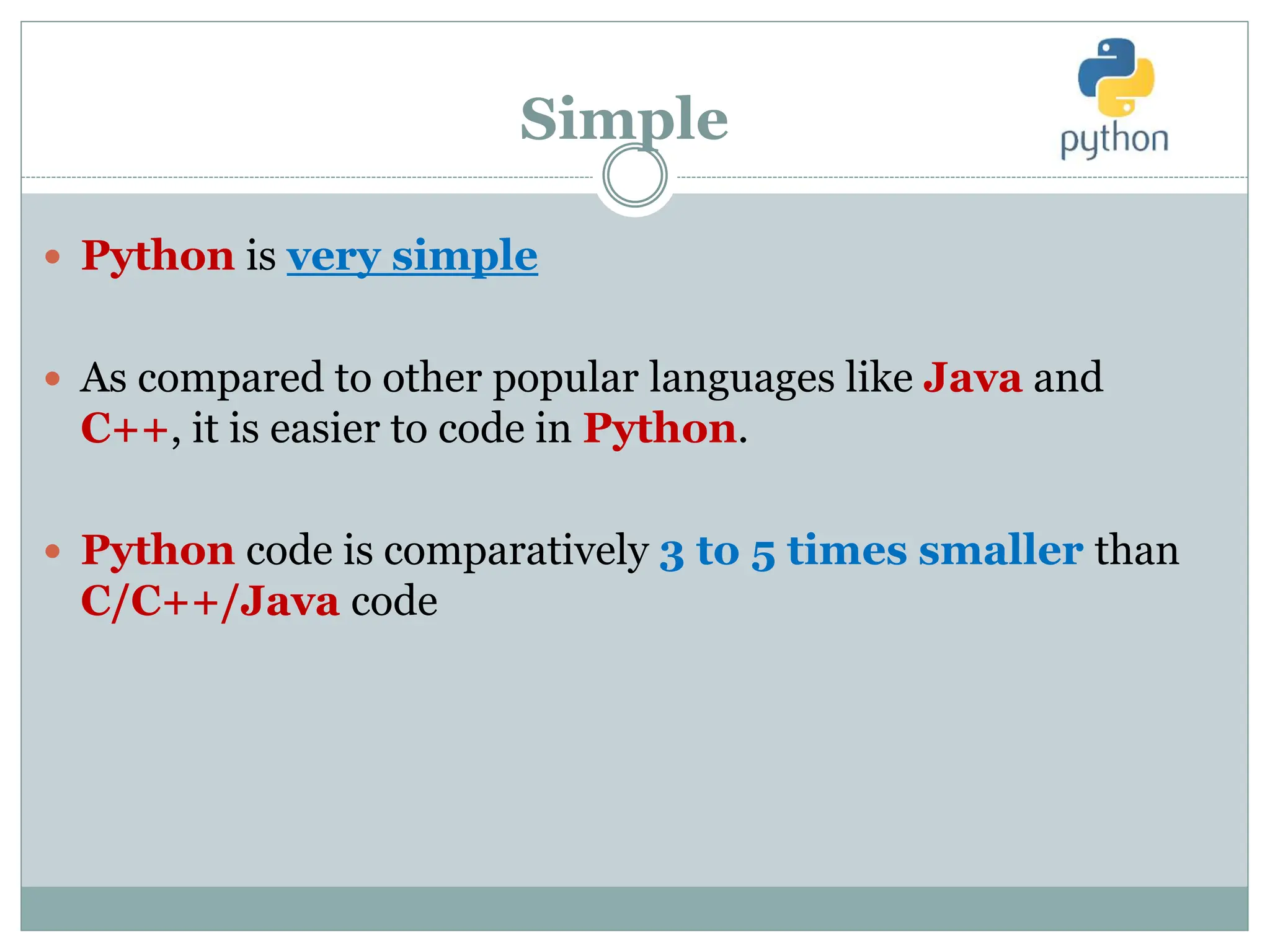
![Print Hello Bhopal!
IN C
#include <stdio.h>
int main(){
printf("Hello Bhopal!");
return 0;
}
IN JAVA
public class HelloWorld{
public static void main( String[] args ) {
System.out.println( "Hello Bhopal!" );
}
}
IN PYTHON
print('Hello Bhopal!')](https://image.slidesharecdn.com/lecture1-240229062818-9778faf4/75/Basic-Python-Introduction-Lecture-1-pptx-27-2048.jpg)
![Add 2 Nos
IN C
#include <stdio.h>
int main(){
int a=10,b=20;
printf(“Sum is %d”,a+b);
return 0;
}
IN JAVA
public class HelloWorld{
public static void main( String[] args ) {
int a=10,b=20;
System.out.println( “Sum is “+(a+b));
}
}
IN PYTHON
a,b=10,20
print(“Sum is”,a+b)](https://image.slidesharecdn.com/lecture1-240229062818-9778faf4/75/Basic-Python-Introduction-Lecture-1-pptx-28-2048.jpg)
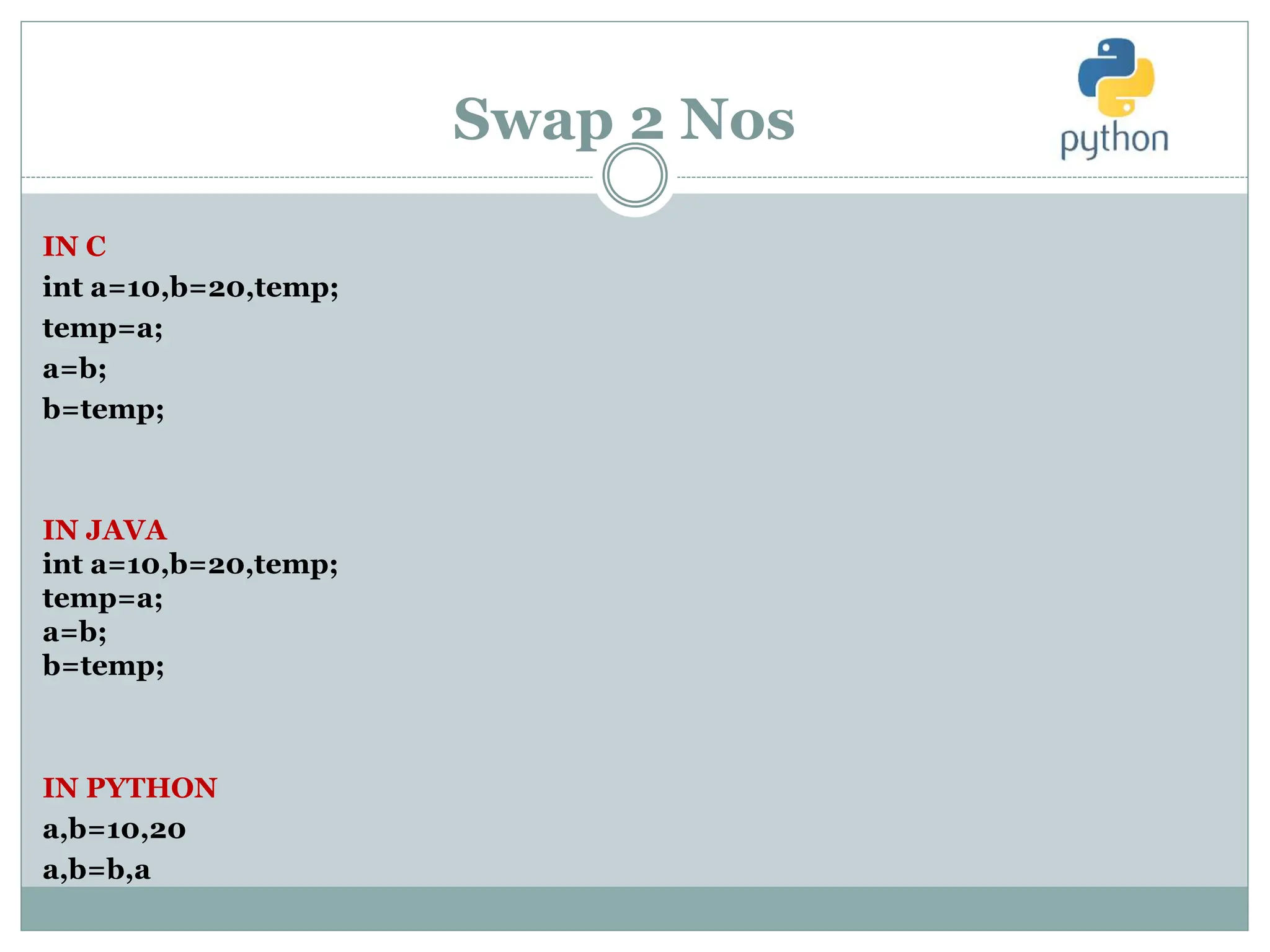
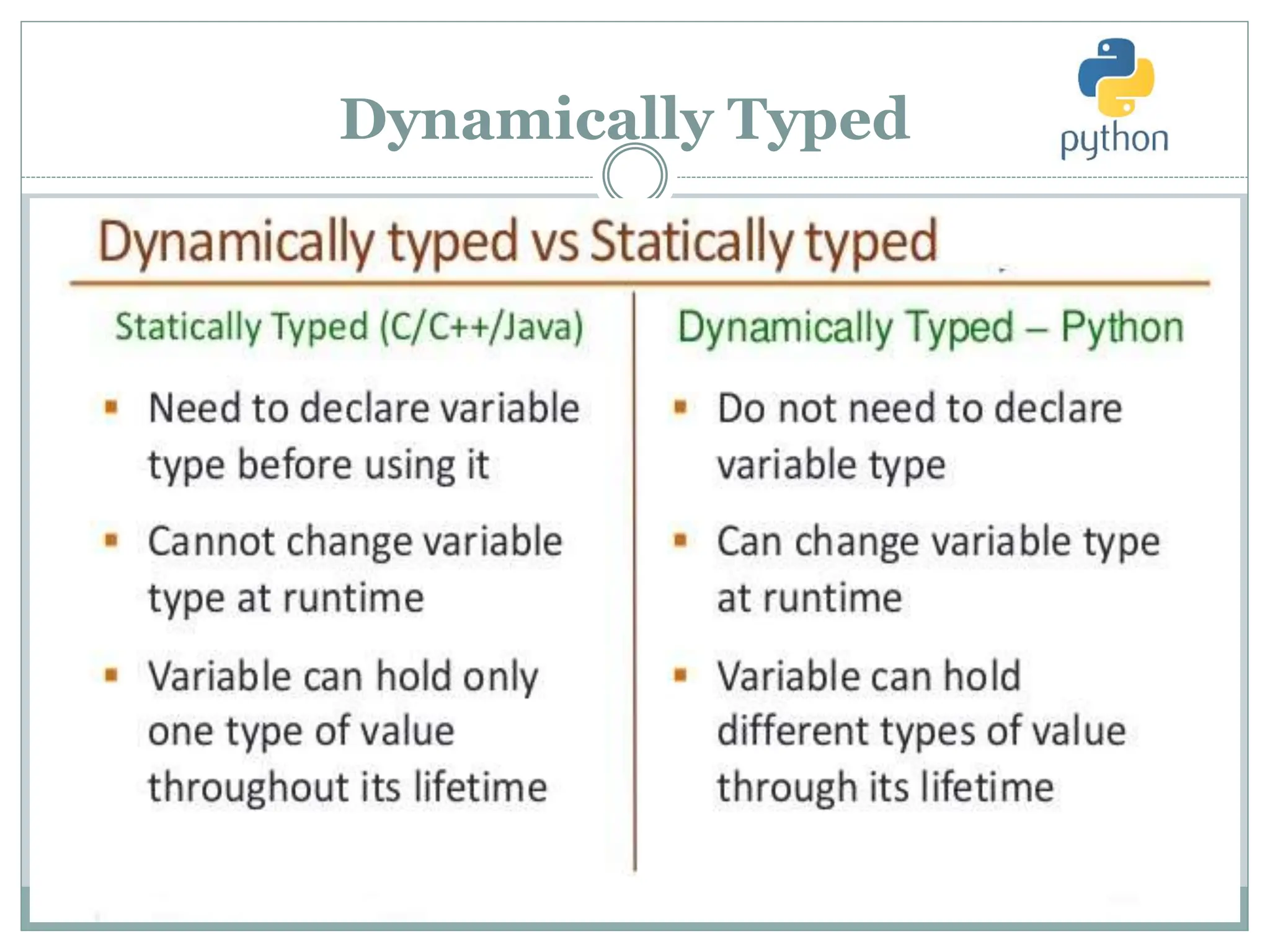
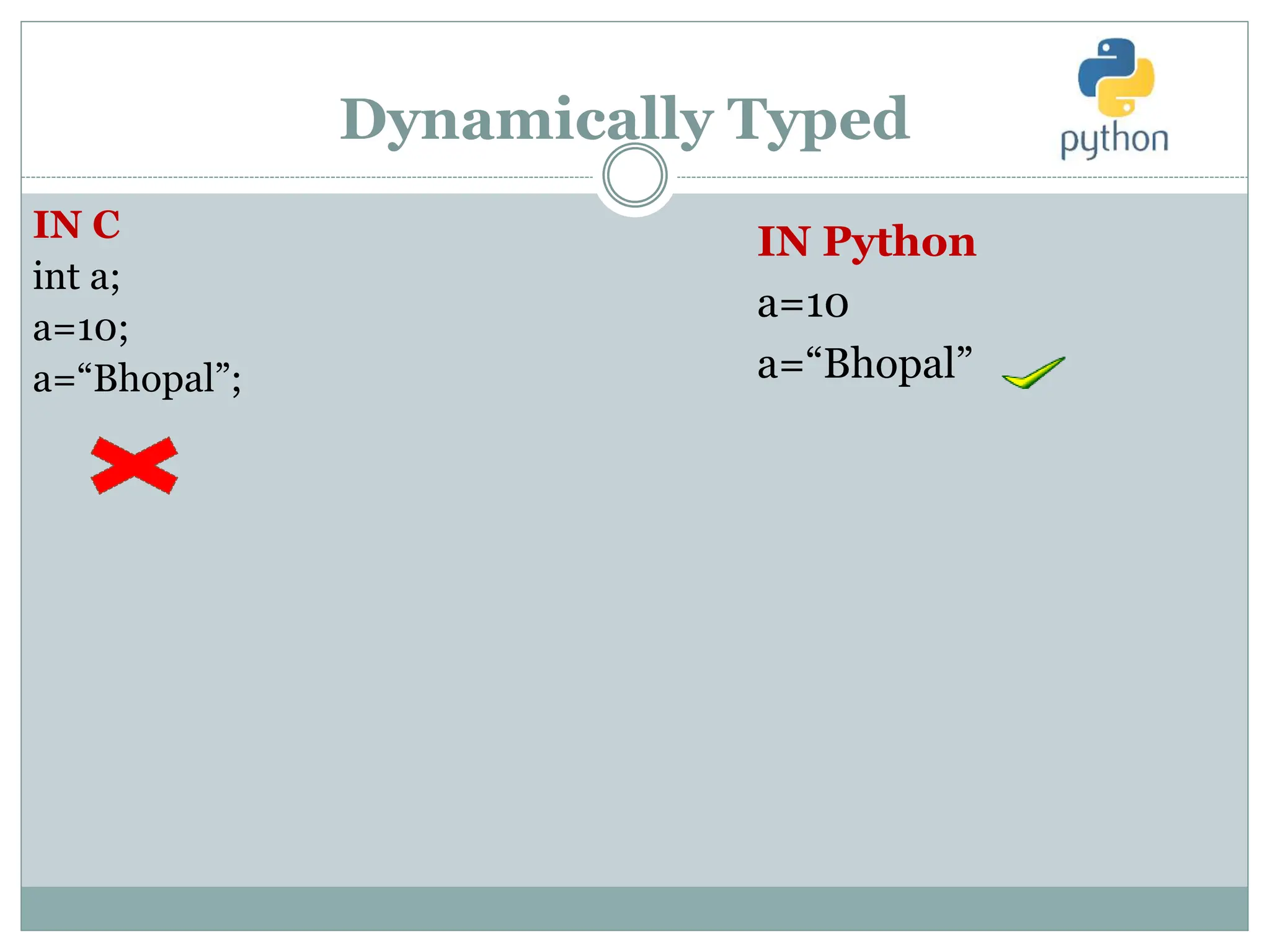
![Robust
Python has very strict rules which every program must
compulsorily follow and if these rules are violated then Python
terminates the code by generating “Exception”
To understand python’s robustness , guess the output of the
following /C++ code:
int arr[5];
int i;
for(i=0;i<=9;i++)
{
arr[i]=i+1;
}](https://image.slidesharecdn.com/lecture1-240229062818-9778faf4/75/Basic-Python-Introduction-Lecture-1-pptx-32-2048.jpg)
